|
After spending our first 2 days in Ecuador exploring Quito and its surrounding area, we were finally heading off to the evolutionary wonder of Galapagos. We had a very early start with a pick-up at our hotel in Quito of 4:45am. There was no traffic at this time of the morning and we reached the airport in under 45 minutes, arriving at 5:25am. Our driver, Tony, parked the car in the outdoor parking lot and helped us with our bags as we walked the short distance to the nearby terminal. The entrance was manned by a security guard who used a handheld digital thermometer to take each of our temperatures before we could continue inside the terminal. Next, we proceeded to a kiosk to purchase a $20 Tourist Card and provide proof of our negative PCR test. The number of required documents to enter Galapagos was the most extensive that we have ever had - partly due to their regular processes and then COVID documentation on top of that. While we were waiting our turn in line at the kiosk, Tony went ahead to do our check-in, printed our boarding passes and luggage tags, then took our bags to be scanned. He stayed with us until our luggage was dropped off at the start of the line for the security check-in. The domestic terminal at the Quito airport is a new, modern facility that is easy to navigate and well organized. We found a comfortable seating area near the boarding gate where we sat for 2 hours waiting for our scheduled flight to board. Once we were settled onto the plane, we were given a 2nd form which needed to be completed prior to our arrival in Galapagos. After a short 30 minutes flying time, we landed at Gaudaquyil, a major port city on the west coast of Ecuador, where we picked up more passengers and continued on for another 1 1/2 hours to Galapagos. After landing and coming to a stop on the tarmac, the overhead bins were opened and sprayed with a disinfectant before we were allowed to remove our carry on and disembark. The ecological experience of Galapagos begins at Seymour airport on the island of Baltra. The airport was initially set up as a U.S. Airfield during the 2nd World War to defend the South American coastline against Japanese submarines. A new terminal was built in 2012 and was the first “Green” air terminal in the world. It was built using recycled steel tubes obtained from drilling operations in the Amazon, uses solar and wind power as well as desalineated sea water. The airport is small and there are no jetways. Our Airbus 319 was parked at the end of a runway near the terminal building and we disembarked using a portable staircase that was brought to the plane. We walked across the hot tarmac to the front of the terminal. Before entering the building, each passenger walked in single file through a canopied “tunnel” about 40 meters in length to be sprayed with a fine disinfectant mist. At the end of the tunnel, a further spray was applied separately to carry on bags and items. Once inside the terminal, we lined up at the Tourist Desk where we had our temperature taken, submitted our tourist card and presented our customs declaration. We also paid our mandatory $100 park entrance fee. Before proceeding to the baggage pickup, all of our hand luggage was scanned to ensure that we were not bringing any environmentally hazardous items into the Galapagos. After collecting our luggage we made our way outside the terminal where small groups of travelers were gathering to find their respective transportation to Santa Cruz Island. We found our guide, Jimmy, who was holding a sign for the “Alya”, the luxury catamaran that would be our home for the next 5 nights as we toured the Galapagos Islands. We waited for the rest of our group to be accounted for, then boarded a small bus that drove us the 10 minutes it takes to get from the airport to the Baltra dock where we disembarked and took a ferry across the narrow channel to Santa Cruz Island. We left the ferry and boarded another bus that would drive us 45 minutes south across the entire island to Puerto Ayora. The drive to Puerto Ayora, despite the relatively short distance (42 kms) was a prelude to the geographic diversity that we would experience over the next several days. As we left from the north at the ferry dock and drove south, we first passed through very dry, desert-like geography with sparse vegetation. After a few miles we passed through the Santa Rosa farming village where there was an abundance of banana plantations. From Santa Rosa to Puerto Ayora, the landscape became less harsh, with mature trees and lush, green vegetation. We arrived in the once bustling town of Puerto Ayora in early afternoon, but the effects of the pandemic were evident as many of the shops and restaurants that we passed on the way to the dock were closed. Puerto Ayora is the largest town in the Galapagos with a population of approximately 12,000. It is the centre of the Galapagos conservation efforts and as such relies heavily on the eco-tourism industry for its economic and conservation survival. At the dock, we waited for the pangas (zodiacs) to take us to the Alya which was moored several hundred metres out in the harbour. The harbour was dotted with moored fishing boats, sail boats as well as the catamarans and yachts that are normally making excursions around the islands. At this time, there were only 2 catamarans (the Alya and its sister ship Galaxy II) and four diving boats that were actively providing tours. None of the other dozens of tourist boats were sailing. As we waited for the pangas to arrive, we peered into the shallow waters near the dock and observed sea turtles, sharks and sea lions, along with a large number of sea birds diving into the water for fish. Several sea lions were scattered along the dock, some lounging lazily on the wooden benches that lined the pier. When our pangas arrived, we made the short journey to the awaiting Alya, where we boarded the luxurious vessel that had 8 staterooms on 2 decks with a capacity of 16 guests. Our stateroom was on the main floor, just in front of the lounge and dining area which was at the aft of the ship. Our room was bright and spacious, with ample storage space and 3 large windows that looked out onto our private balcony. We had lunch in the dining area that consisted of 2 long tables with room for 8 guests each. While in normal times, lunch and breakfast were served buffet style, pandemic protocols meant that all meals were plated and served to guests at the table. As well as this safety measure, masks were mandatory in all public parts of the ship, except while dining. Today’s lunch consisted of fish, rice and salad. During our first lunch on board we met the rest of the passengers that would be joining us on the trip. Of the total 15 guests aboard this particular cruise, 11 were ex-pat Americans who had taken up residence in Ecuador, 2 were a couple from Ecuador and Kim and I who were the only guests from outside the country. After lunch, we once again boarded the pangas that took us back to the docks at Puerto Ayora. We were about to take our first excursion! At the dock we boarded our small tour bus and drove out of Puerto Ayora to the highlands just north of the town where we would get a chance to see the Pancita Tunnel Lava Tube. Lava tubes are formed as the result of the outer layer of the lava flow cooling and crusting while the inner layer continues to flow. The result is an underground tunnel that can be up to several kilometers long. The Pancita tunnel lava tube is approximately 400 meters long and is quite large and cavernous at the entrance. We walked down a set of stone steps into the tunnel, which was lighted by a string of incandescent bulbs hanging from the ceiling. The tunnel curved in snake-like fashion and the walk was relatively easy for the most part. Our guide told us that there are sections of the tunnel that are quite tight and which require crawling on your hands and knees to get through. This is a requirement if you decide to go from the entrance (where we came in) to the exit at the other end. We walked a couple of hundred metres from the entrance and then returned the way we came. After we exited the lava tunnels, we reboarded our bus and drove a short distance to the neighbouring Rancho Premicias - Giant Tortoise Reserve. From a wildlife perspective, this was one of several highlights of our trip. The reserve is privately owned and protects several dozen of the massive and impressive Giant Tortoises. They are scattered around the wooded reserve and we were free to wander and observe these enormous reptiles as they crawled in apparent slow-motion while as they fed and poked along. We came across a large group of ten or so that were semi-submerged in a pond of muddy water. We also followed one solitary male who was apparently the largest on the reserve, weighing nearly 500 pounds. We spent more than an hour watching and walking with the tortoises before it was time to head back to Puerto Ayora. When we arrived in Puerto Ayora we stopped at a Pharmacy in order to stock up on sunscreen and insect repellant as there would not be any facilities once we left the harbour. Kim was suffering from a migraine when we got back on the Alya and elected to skip dinner and go to bed. I ate in the dining room with the other guests and enjoyed a meal of fresh red snapper and casava, a root vegetable similar to potato which was served with a mayonnaise sauce. The chef prepared a small meal for Kim which included soup which I took back to the room. Both of us slept well after a long and exhausting day and we were looking forward to the next part of our trip.
0 Comments
We had an early pick-up from the NH Collection Hotel on our second day in Quito. Our guide, Alejandro, met us in the lobby at 7:30am. We would be heading out of Quito today a drive across the western Andes to one of the most biologically diverse ecosystems in the world - the Mindo Valley - where 3 major rivers converge in the midst of cloud forests and lush agricultural lands. About an hour into our drive we made a minor detour from the main road and entered the southern tip of the Pululahua Geobotanical Reserve. While the park was open, there were no vehicles in the parking lot at the entrance to the reserve. We walked about 200 meters from the entrance to a lookout with a spectacular view of the crater of the Pululahua Volcano. Expecting to see a typical rocky, barren crater, we were totally surprised by the vista of lush, cultivated fields surrounding a village of approximately 800 people. In fact, the Pululahua crater is only one of 2 volcanic craters in the world that are inhabited, and the only one that is farmed for agriculture. The self-sustaining community made a decision at the beginning of the pandemic to fully isolate, and as a result had no incidents of Covid infections. Leaving the reserve, we continued our scenic journey for 2 hours travelling on a well paved road winding around the mountains and through the valleys of the Andes. As we approached the town of Mindo, we left the main highway and bumped along a dirt road for about 5 miles before we stopped at the entrance to Tarabita and Mindo Waterfall Sanctuary. Prior to being allowed to enter the parking lot, our car was disinfected by a park attendant with a tank sprayer (yet another example of how seriously Ecuador was taking the Covid pandemic). Alejandro purchased our tickets to the sanctuary and we began our hike down a narrow trail through the cloud forest on our way to the waterfall. The 30 minute hike to the falls was mostly downhill and Alejandro pointed out some of the native plants and flora along the way. We were also fortunate to spot colourful toucanets perched among the treetops. We arrived at the falls which spilled into a shallow, rocky river that wound through the valley. After spending some time enjoying the cool mist coming off the falls, we crossed over the river and continued along the trail. The river was at the lowest point of the trail and as we looped back towards the starting point the rest of the hike would be uphill. The trail eventually stopped at the top of a mountain overlooking a deep ravine. The final leg of the trek would be via the Tarabita cable car which crosses the ravine at a height of 150 metres and offers breathtaking views of the valley, mountains and cloud forest. We exited the cable car at the entrance to the sanctuary and made the short drive into the quaint and colourful town of Mindo. Alejandro took us to a small local restaurant where we enjoyed a traditional Ecuadorian lunch of crab and shrimp ceviche accompanied with plantain chips. After lunch we visited one of the special attractions of this area, the Mariposario de Mindo, a family owned Butterfly garden that focuses on the conservation of these beautiful and delicate insects. As well as the nearly 40 species of butterflies that the garden houses, there are also an array of stunning orchids and countless flitting hummingbirds. We spent quite a bit of time meandering with the butterflies. Several stations were lined against one netted wall of the garden where pupa were in various stages of transformation prior to emerging as majestic butterflies. There are nearly 1200 mature butterflies in the garden and it seems almost magical to be able to walk amongst them as they dance about. Some would land briefly on our shoulder before darting off again and Kim was able to have one perch on her hand. Just a few metres up the street from the Mariposario is another favourite spot in the town of Mindo - Yumbos Chocolate - an artesanal chocolatier that takes you through the process of making chocolate from bean to finished product. The entrance takes you into a small storefront which displays a large variety of chocolates and chocolate based products. We walked through the store and emerged into an outdoor area with several sorters and roasters set up where we were instructed on the 40 day process to convert cocoa beans to chocolate bars. After our lesson, we walked into a forested garden where several large tables were set up for chocolate tasting. Here we sampled several versions of hot chocolate, chocolate treats ranging from 60% to 100% cocoa and brownies. Afterwards, we went back into the store where we purchased a couple of packages of our favourites to take home with us. Yumbos was our last stop in Mindo and we headed back on the 2 1/2 hour journey to our hotel in Quito where we arrived at 6:30pm. After getting changed we walked one block up the street to La Briciola, a highly regarded Italian restaurant where we had a 7:00pm dinner reservation. Like the Gloria restaurant where we ate the night before, there were only a few other patrons in the restaurant. The exposed brick archways and walls, coupled with the wooden chairs and red table coverings give the restaurant a warm ambiance. We ordered a shrimp appetizer followed by mains of ravioli stuffed with ricotta and seafood farfalle. The freshly made pasta was mouthwatering with rich and vibrant flavours. We enjoyed the restaurant and food so much that we made a reservation for the following week when we would be returning to Quito prior to our flight home. It was certainly the perfecting ending to an busy day.
Continue to Day 3 - click here We woke up early on our first day in Quito. Because we required a negative PCR test to be done within 72 hours of entering Galapagos, and our PCR test to enter Ecuador had been taken outside of that window, our tour operator had arranged for us to receive a test at our hotel in Quito. The technician was scheduled to arrive at 8:00am and by 8:05 we received a call in our room to let us know she had arrived. We had the option to take the test in our room or in a conference room off the main lobby. We opted for the conference room since we would then be ready for our private tour of Quito which was scheduled to leave the hotel at 8:30. The PCR test that we had received in Ontario before we left Canada had been fairly innocuous. This latest test seemed far more invasive and lasted several seconds longer than our Canadian test. We were more than willing to put up with the discomfort and were told that our results would be emailed to us after 6:00pm on the same day. This was substantially faster than the 5-day turnaround for our Ontario test. It was nearly 8:30am by the time we had both finished being tested and we only waited about 5 minutes in the hotel lobby before our guide, Alejandro, texted us to let us know he had arrived. We met him in the lobby, and he directed us to his car parked outside the hotel. He sprayed our hands and shoes with disinfectant before we could enter the vehicle. We drove through the downtown and then began winding our way through the narrow streets up the mountain towards one of the iconic symbols of Quito – the 41-metre-high aluminum statue of the Virgin Mary that overlooks the city and surrounding valley. Alejandro was proud to point out that the Virgin Mary is actually taller than Christ the Redeemer statue in Brazil by 3 metres. It also happens to be the tallest aluminum statue in the world. Since there were no other tourists, we were able to park at the base of the statue and spend several minutes taking unobstructed photos of the monolithic figure. She is graced with large, open wings and is clenching a long thick chain which is tethered to a snake that is the representation of evil. From the statue, we walked down a flight of steps and crossed the road leading away from the monument where we had a wonderful panoramic view of Quito, sprawling through the valley of Pichincha, the volcano that forms the western border of the city. Migrants and recent immigrants have started building illegal homes on the sides of Pichincha, despite the substantial number of eruptions and several hundred tremors per month that emanate from its mass. The city streets are laid out in typical Spanish style running in symmetrical perpendicular lines. The panoramic view from this elevated location allowed us to see the 42 Catholic churches that are laid out in the shape of a crucifix, with the beautiful Basilica built at the head of the cross. Alejandro provided us with an overview of the city before we returned to his car to drive to the old town. Quito is situated 2820 metres above sea level and is the closest capital city to the equator which passes just one kilometer outside the city limits. In 1978 it was the first city in the world to be designated a UNESCO World Heritage Site due to its incredible geography and the preservation of its colonial past which is exemplified throughout the city. We left the heights of El Panecillo Hill and continued our tour of the old town at the city’s main square, Plaza de la Indepencia, which commemorates the First Cry of Independence from the Spanish monarchy in 1809. The sprawling square plaza is bordered by the Carondelet Palace, the Metropolitan Cathedral, the Archbishop's Palace, the Municipal Palace, and the Plaza Grande Hotel. Beside the Metropolitan Cathedral is the church of Nuestra Senora de la Merced. The classic white building was constructed in the early 1700’s and consists of 5 domes and a square tower. The interior is decorated with Incan and Moorish inscriptions. We walked a short distance from the square to another significant church in Quito – the Church of La Compania de Jesus. This Jesuit church is an elaborate and ornate structure that took 160 years to build from 1605 to 1765. It is adorned in glittering gold leaf, gilded plaster and wood carvings. The brilliance of the gold covering nearly every part of the interior is breathtaking and is why La Compania de Jesus is called the Church of Gold. Nearly 10% of the church was destroyed in a fire in 1996 when an overloaded electrical outlet exploded during a renovation. According to Alejandro, the subsequent 10-year restoration is estimated to have cost nearly 14 billion dollars. Unfortunately they do not allow pictures inside. Just a stone’s throw from the Church of La Compania de Jesus sits the largest colonial architectural ensemble in Latin America – the Iglesia y Convento de San Francisco (the Church and Convent of St. Francis). This 16th century complex is set in front of a large courtyard that gets its name from the church. The expansive courtyard was lifted stone by stone during the construction of the Quito metro and then replaced after the construction of the subway at the end of the last decade. One of the fascinating aspects of our walk through the colonial downtown during this phase of the Covid pandemic was the strict adherence to Covid health protocols. As Canadians visiting this Latin American city we were impressed and relieved to see the protocols were followed by everyone. In Canada, wearing face masks outside was extremely rare. In Quito, as well as the rest of Ecuador, masks were worn by everyone, all the time. Prior to entering any church, museum, or restaurant we had to go through a disinfection process where we were sprayed and then walked through a foot bath to disinfect our shoes. Following the disinfection process our temperatures were taken before we were allowed to enter any venue. We continued our walk through the colonial downtown and eventually found our way to the Diosolopay Restaurant where we stopped for lunch. We entered the restaurant through an open Spanish courtyard bordered by large archways. We selected an outside table in the courtyard where we were able to enjoy the fresh air and ambiance of the square. This restaurant is known for its Ecuadorian fare and Alejandro suggested that we try the Locro de Papa which is a classic Ecuadorian soup made with potato, cheese and avocado. This was an excellent choice as the soup was bursting with rich flavour and it became a staple for us at different restaurants during our stay in Ecuador. After lunch we made a quick visit to the Basilica del Voto Nacional, the largest neo-gothic church in South America. This church has a fascinating history, having been conceived as an idea in 1883 it took until 1894 before construction began and after that, 30 years to complete. It was not until 1985 that the church was blessed by Pope John II and finally inaugurated in 1988. The church will never be officially recognized as “completed” since legend suggests that once it is finished, the end of the world will come. The Basilica is visually striking from the outside and is adorned with local animals such as turtles and iguanas instead of the traditional gargoyles that are often seen on other neo-gothic churches. From the Basilica, Alejandro drove us to the TelefériQo Cruz Loma, a gondola lift that starts from the edge of the city centre and rises nearly 800 metres up the east side of Pichincha Volcano to lookout Cruz Loma. It is one of the highest aerial lifts in the world taking about 15 minutes to reach its maximum height of nearly 4000 metres above sea level. It was incredible to see mountain bikers carrying their bikes on the gondola in order to ride down the extremely steep trails from the top of the volcano. A couple of amateur bikers lost their nerve before beginning the descent and we saw them reload their bikes on the gondola to take the much safer route back down the mountain. The air is extremely thin at this altitude, and it was somewhat difficult to breathe as we tried ascending an incline to get a better view of the valley below. Kim had begun to get a headache and Alejandro suggested we stop at the café to get cocoa tea which helped to alleviate the pain. We spent about ½ an hour at the Cruz Loma lookout before returning on the teleferic to the city below. It was mid-afternoon and we still had one more stop to make before returning to the hotel. We drove to the outskirts of the city to the Museo de Sitio Intinan the location of the equator originally pinpointed by the French on an expedition in 1736. With the advent of advanced technologies, such as GPS, it was later determined that the equator is actually located 200 metres away. The Museum de Sitio Intinan is a small, but unique attraction. It provides an interactive experience and most of the artifacts and activities are outside or in grass covered huts. Our tour through the museum started with an Amazon discovery – our guide walked us through an open building where we watched as indigenous artisans worked on handmade crafts and clothes. We then moved on to another area which displayed a traditional tribal home, hunting weapons and a variety of jungle wildlife including a gargantuan tarantula. The most unique, albeit unsettling display, was of shrunken human heads, an ancient religious tradition in the Amazon. It was believed that by shrinking the heads of enemies, their souls would not be avenging their death. After passing through the Amazon display, we ventured to a large outdoor, rectangular area. A tall pole, embedded in a concrete block marks the spot where the equator was originally thought to be. A thick orange line leading away from the marker serves to divide the northern and southern hemisphere. This is the popular spot to have a photo taken where you have one foot on either side of the equator. Just past the marker are several activities that show the effect of the equator through a variety of experiments. One activity involves pouring water into a tub with a drain hole in the centre that shows the direction the water drains on either side of the equator. On one side the water drains in a clockwise motion and on the other side it drains counter clockwise. The next activity involves balancing an egg on the head of a nail. The gravitational pull at the equator allows the egg to be placed on end on top of the nail without falling over. It took a couple of tries, but both Kim and I were able to do it. The final activity involves waking along the equator line placing one foot directly in front of the other and trying to maintain your balance. I was not able to do it. At the exit to the museum is a fascinating sculptural display by a local artist who has used recycled materials to create some impressive pieces. We left the museum and started our drive back to the NH Collection Quito Hotel, but we had one more quick stop to make which was on our route. Alejandro had told us about a small takeout restaurant where we could get some freshly baked empanadas - traditional Latin American pastries that are filled with meat or vegetables. We pulled to the side of the road in front of the restaurant, and each ordered a steaming pastry. After our long and busy day, this was a welcome and delicious snack. Alejandro dropped us off at the hotel where we went through the usual protocol of having our temperature checked and disinfecting our hands. We relaxed for a bit and then got ready for dinner. I had made reservations at La Gloria, an upscale restaurant featuring Latin American and Mediterranean cuisine that was a 15-minute walk from the hotel. Following social distancing protocols, we were seated at a corner table away from the only 2 other tables that were occupied in the restaurant. The venue is quite large and consists of a main dining area, a bar area and a glass-enclosed wine room that is filled from floor to ceiling with hundreds of bottles from dozens of countries around the world.
Our waiter brought us ice water and provided each of us with a square logoed card that had a QR code in the middle. He instructed us to scan the QR code with our phones to view today’s menu. This was something the restaurant had implemented for the pandemic to minimize contact with traditional placard menus. The menu, like the wine list, was extensive and varied. We ordered grilled octopus for an appetizer along with tuna pepper steak and penne aribiatta for our main course. We finished off the dinner with a complimentary dessert provided by the restaurant. Our walk back to the hotel was leisurely and eerily quiet given that we were in a normally busy area for tourists. By the time we got back to our room it was close to 10pm and we were tuckered out from the excitement of our day-long exploration of the city of Quito. Our trip to Ecuador and Galapagos started with a lot of unknowns. Since this was our first travel experience since the beginning of the Covid pandemic, we weren’t sure of what to expect, especially once we got to the airport. We arrived at Terminal 1 of Toronto’s Pearson International Airport well ahead of our 11:30am departure. As we pulled into the passenger unloading area it was already evident that things had changed. There were less than a dozen cars scattered along the length of the terminal. We unloaded our luggage and proceeded into the sprawling terminal which seemed eerily empty save for small clusters of passengers at a handful of the check-in counters that were open. We had opted to fly Business Class given that the Covid related discount was equivalent to normal economy rates, so we took advantage of the expedited check-in and made our way through the deserted terminal to security. Security was just as empty as the rest of the terminal and we were able to get through in no time at all. The only additional step was a contactless temperature check. Once through security, we took advantage of another Business Class perk and made our way up to the Star Alliance lounge to spend the next hour. The lounge had been reconfigured so that there were only single seats spaced the required 2 metres apart. Arrows on the floor guided the direction of traffic flow and despite the fact that there were only 6 other people in the lounge, we followed the arrows, picked a seat and proceeded to the breakfast area where we were provided with prepackaged yogurt along with fruit parfaits and granola bars. An hour prior to our flight we left the lounge to make the long journey to the end of the terminal. We walked the seemingly endless, empty corridor towards our gate at the far end of the terminal. None of the stores, restaurants and kiosks that are normally bustling with people were open. The first signs of any large groupings of people were when we arrived at our gate, where the normal 2 metre social distancing protocol did not seem to be in place, although everyone was wearing masks. As we scanned our boarding cards and started onto the jetway, we were stopped by Canadian Border authorities who were doing a currency check of each passenger to ensure that we were not carrying more than $10,000 CDN. We settled into our very roomy and comfortable seats and shortly after, the aircraft pulled away from the jetway. While the Business Class section of the plane was less than half full, economy seemed to be at full capacity. We had a pleasant 5 hour flight from Toronto to our connecting airport in Panama, though even in Business Class the meal service was limited to water and a boxed lunch. Once in Panama, we left the relative safety of the Boeing 737 and entered the chaotic Panama Airport terminal that was teeming with people. Though everyone was wearing masks, social distancing was impossible because of the sheer numbers. Since we were in the international terminal for connecting passengers, we were able to proceed to our gate without having to go through security or other checks. For those passengers whose final destination was Panama, they were directed to Covid screening centers where they needed to show proof of a Negative PCR test. For those who did not have a test, multiple booths were set up with medical technicians who were conducting on-site testing. After determining where our departing gate was located, we searched for a quiet place to sit and eat a take-out pizza that we had purchased from one of the airport restaurants. While we waited for our boarding time, we received 3 different notifications from Copa airlines changing our departure gate all within 20 minutes of our initial boarding time. Fortunately, the area that we had found to sit was only a few gates away from where we needed to be. Our full flight left right on time and after a relatively quick 1 ½ hours of flying, we arrived in Quito, Ecuador. As soon as we deplaned we were led to a screening area where we were asked to sit in socially distanced seats to have our temperature taken and provide documents to prove Negative PCR tests which were then stamped. Our pre-filled Health declaration forms were also collected and then we were asked to proceed to customs. The customs process was fairly routine and after providing our documents, which were validated and stamped we had our photos taken before we could make our way to the baggage area. Our bags had been tagged with red priority stickers since we had flown Business Class, but they were still among the last bags that came off the carousel. It turned out that the highly visible, red priority tags had been hidden under our destination tags and were missed by the luggage crew.
After exiting the baggage area, we were greeted by our pre-arranged driver, Tony. As he led us out of the airport terminal, we had another temperature check at the exit. He then led us to his car where he sprayed our hands with alcohol and disinfected our shoes. He drove us the 45 minutes to the NH Collection Hotel in the Quito downtown area. Tony unloaded our bags which were carried into the hotel by the concierge. Before we were allowed to enter we underwent a temperature check and were provided with sanitizing gel for our hands. The lobby was empty except for the concierge and the night manager at reception. We checked in and were directed to our room on the 16th floor. As we hadn’t eaten since the snack in Panama and it was now approaching 10:00pm, we ordered some appetizers from room service, unpacked our bags and went to bed, looking forward to our city tour of Quito the next morning. Continue to Day 1 - click here We woke up early on our last day in Rio (and, unfortunately, our last day in South America) so that we could go back to Mount Corcovado for a better look at the iconic Christ the Redeemer (and the unparalleled panoramic view of the city) than we were able to glean yesterday. From our hotel window, we could see that this morning the bright blue sky was dotted with fluffy white clouds and we were hopeful that we could make it to the top of the mountain before the clouds gathered around the giant statue. Kim had arranged for an Uber that would take us to the base of Corcovado from where we would board the Corcovado Rack Railway, also referred to as the Cog Train, to make the journey up the mountain. It took just 15 minutes from the JW Marriott on Copacabana beach to the train entrance and we arrived shortly before the first scheduled departure at 8:00am. There are 3 trains that make the trip to the base of the statue with scheduled departures every 20 minutes. Each train has 2 cars with the ability to transport up to 180 people per trip. There was quite a long queue by the time we reached the ramp leading up to the ticket office but we were able to get on the first train to make the 20 minute climb up Corcovado. Most of that time was spent travelling through the lush Atlantic Forest that covers the mountain. We arrived at Christ the Redeemer before 8:30am and while clouds had already started forming above the statue we had a full, unobstructed view of the magnificent monument. We were so glad we had made the return today after our rather disappointing try yesterday. Not only was the weather more agreeable, there were quite a few less people here today, undoubtedly due to our much earlier start. We took in the amazing views of the sprawling city below and saw some of the places we had visited yesterday, including the Maracanã Stadium, Sugarloaf Mountain and Copacabana Beach. We spent about 45 minutes walking around the statue and taking in the various viewpoints of the city below before we decided to head back to make our return trip on the train. Kim used the WIFI connection in the restaurant at the base of the statue to book an Uber that would meet us at the exit to the train. We were back at the hotel before 9:30 and were in time to have a late breakfast before heading out to the beach. After breakfast, we donned our swimsuits and flipflops, then walked across the boulevard directly to the expansive beach. The hotel had a designated area for guests where we were able to get complimentary lounge chairs, umbrellas and towels. Since it was only mid-morning, the white, sandy beach was still relatively quiet, although there were a considerable number of booths open that were selling food and beverage, souvenirs and crafts. It is easy to see why Copacabana is considered one of the world’s best beaches. It is located in the South Zone of the city and stretches 4 kilometers from south to north. The warm sun, combined with the cooling breeze off the Atlantic could not have made this relaxing morning any more perfect. We had a great view up and down the beach with Christ the Redeemer peering down on us from behind the hotels. Kim arranged for a surprise leg message and we each had a featured cocktail from one of the nearby vendors. We did take an occasional dip in the water, but the breaking waves were quite rough and the force of the current around our legs and feet was a bit unsettling. As it was approaching noon, we reluctantly left the beach to go back to the hotel. Our initial check-out time was 12:00 o’clock, but we had a late-night flight back to Toronto and we still had one more excursion planned for the afternoon. We paid for an extended check-out that would allow us to use the room until 6:00pm. We changed into our street clothes and went back to the lobby to wait for our guide and driver to take us on our last excursion in South America - a walking tour of one of Rio’s hundreds of favellas. We were picked up at 1:00pm and joined by about a dozen other people in the van that drove us to the starting point of our tour. Our guide was a wiry, grizzled gentleman in his 50’s who had been born and raised in the Rocinha favella where we would be doing our walk. He had been raised by his grandmother and without the benefit of a formal education, had taught himself English and spent his youth reading. Throughout our tour he talked with passion and pride about his neighbourhood and the enduring people that made a living and raised their families in its confines. Despite the run-down appearance of the structures that had been built over the decades, he portrayed a vibrant community of people who made the best of their meagre circumstances. Rocinha is the largest favella in Brazil with a population of about 100,000 residents. It is located in the South Zone of Rio and only 1 kilometre from the nearest beach. Much like the shantytowns in South Africa, favellas in Rio originated from the influx of rural and migrant workers who set up makeshift housing along the outskirts of the city. As more and more migrants arrived, the favellas expanded into the metropolitan areas and evolved into distinct neighbourhoods. As we drove from the exclusive hotel district with its wide avenues and modern buildings into the favella, there was a noticeable change in general surroundings. The streets were much narrower with far more pedestrians than other areas of the South Zone. The buildings were primarily brick and concrete, many covered in graffiti and local pop art. Rocinha is built on a steep hill and our driver took us to the highest part of the neighbourhood. We got out of the van and walked through the favella towards the bottom, where the van would pick us up. We walked down countless steep steps through narrow, dark alleys that took us past dozens of tiny apartments built next to, and on top of each other. Many had openings for doors and windows that were missing making privacy almost non-existent. Most of the houses have only basic sanitation, plumbing and electricity (masses of tangled electrical wire were dangling overhead and strung from building to building). Rocinha has more infrastructure than many of the other favellas and has hundreds of businesses including banks, pharmacies, and its own TV channel making it relatively self-sufficient. The tour of Rocinha is an eye-opening experience that emphasizes the wide disparity that exists between the poor neighbourhoods of Rio and the wealth that is evident in the affluent areas little more than a kilometre away. After leaving the favella, we elected to walk to our hotel instead of taking the van back with the rest of the group. The late afternoon sun was still quite warm, and we wanted to enjoy a bit more sunshine before the bitter cold that would welcome us back in Canada. When we got to the hotel, we finished packing up, checked out of our room and dropped our luggage off at the front desk to hold for us until we left for the airport. There was an outdoor Italian restaurant in the hotel next to ours that we had decided to book for dinner. It was a great spot overlooking the boulevard and the beach beyond. We ordered a couple of homemade pasta dishes - Kim had a hearty Stuffed Ravioli, while I opted for a freshly made Fettuccini Alfredo. We lingered over our meal while we enjoyed the evening ambiance and mood of Copacabana. With mixed emotions we finally left the restaurant to pick up our bags at the hotel and booked an Uber to take us to the airport. We had been away for a full 3 weeks and had visited 4 countries in South America - Chile, Argentina, Uruguay and Brazil. Our trip had included some incredible memories and several of the most amazing sites in the world. We also left with the knowledge that there were still some South American destinations on our bucket list including Galapogos, the Amazon and Machu Piccu and that we would be back.
We would be spending our last two days in South America in the vibrant metropolitan city of Rio de Janeiro, more commonly known as just “Rio”. Like the rest of Brazil (and unlike the rest of South America) the predominant language in Rio is Portuguese. It is one of the most visited cities in the Southern Hemisphere, and while it was the original capital of Brazil, that distinction changed in 1960 when the national capital was moved to Brasilia. Rio de Janeiro received its name when the first Portuguese navigators arrived at the mouth of Guanabara Bay on the Atlantic Coast of South Eastern Brazil. The navigators mistook the bay for a river (rio in Portuguese) and since it was January 1st, they creatively called it Rio de Janeiro - River of January. Kim had selected the JW Marriot Hotel Rio de Janeiro as our headquarters for our 2 day stopover in Rio and the location could not have been more perfect. Aside from being at Copacabana, arguably the most famous beach in the world, it was conveniently located near all of the major things that we wanted to see and do on our short stay. Directly behind our hotel was Mount Corcovado, the site of the iconic Christ the Redeemer, which we could see from the beach or from the rooftop pool and bar. From our balcony overlooking the beach, we also had an unobstructed view of Sugarloaf Mountain, one of the major attractions of the city. We had enjoyed a very restful sleep in the comfortable king bed adorned with luxurious linens on our first night at the JW Marriott so we awoke refreshed and ready to start exploring the sights and sounds of Rio. Before heading out on our first excursion, we went to the Carioca dining area for breakfast where we selected items from an extensive buffet offering. After breakfast we were picked up by the tour company that Kim had booked and we squeezed into the narrow seats of a tour van that would be taking us around the city for most of the day. We left the hotel just after 8:00am under partly sunny skies and made a couple of stops at other local hotels to pick up the rest of the passengers that were also on the tour. While the hotels were all located in the same general area of Copacabana, not all of the passengers were ready when we arrived to pick them up. In one case we waited nearly 10 minutes for the couple to meet us at their pick-up location. While this is not the way we typically tour (with 12-16 people) it was the most efficient way to get around this massive city to see the major sites in one day. Our first visit would be to one of the locations we had been looking forward to the most - Christ the Redeemer, standing, arms outstretched, atop Mount Corcovado and one of the most recognizable monuments in the world. It should normally have taken about 20 minutes from our hotel to the entrance of the site where the tickets are purchased but, because of the delay we encountered waiting for passengers, it took over an hour. As a result, by the time the van drove to the entrance of Christ the Redeemer and the guide picked up our tickets so we could be shuttled to the monument at the top of Mount Corcovado, the clouds had begun to settle around the monument which quickly became obscured in a thick, gray mist. We were barely able to make out the statue, even at close quarters, and we could only get glimpses through the cloud, of the sprawling city below, which seemed to be basking in sunshine. After a short discussion with the tour guide, Kim and I determined that it would be best to try again tomorrow and arrive earlier in order to avoid the persistent mist that begins settling on the mountain by mid-morning. After leaving Mount Corcovado, we continued on our city tour, descending the mountainside on the narrow, winding road that took us through several residential and business neighbourhoods. We toured around the city core and passed by the famous Maracana Stadium, host of 2 FIFA World Cups, the 2016 Summer Olympics as well as concerts for some of music’s biggest icons including Tina Turner, Paul McArtney, Michael Jackson, Madonna and the Rolling Stones. The stadium was opened in 1950 to host the FIFA World Cup in front of 199,854 spectators making it the world’s largest stadium by capacity and it has held several events in excess of 100,000 until the late 1990’s. Its capacity has been reduced over time as bleachers have been replaced by more comfortable seats and its current capacity is 78,000 as a result of renovations for the 2014 Summer Olympics, still making it the largest stadium in Brazil. We continued our drive to our next stop - the Metropolitan Cathedral of San Sebastian. This is unlike any cathedral that we have ever visited. While most cathedrals have a traditional, Gothic style with tall spires typically topped by a cross, this one looks like a simple but modern concrete pyramid, devoid on the outside of any religious or Christian symbolism. Inside there is only one level with no columns or supporting structures. It is a large, mostly empty space that can seat 5000 people with a standing room capacity of 20,000. There is a large stepped platform at the center where the main altar is located. Each of the 4 pyramid walls is highlighted by an immense stained glass window that soars 64 meters high (equivalent to 15 stories of a high-rise). After leaving the San Sebastian, we travelled for another 15 minutes passing through a neighbourhood adorned with colourful and elaborate street art, something we had seen a few times on our morning drive around Rio. We arrived at yet another world famous location in Rio, the Seleron Steps located in the Lapa and Santa Teresa neighbourhoods. The steps were the creation of Chilean artist Jorge Selaron, who began painting the 215 steps measuring 125 metres long in 1990. He originally scavenged tiles from construction sites and waste he found on Rio streets. Eventually, visitors from the around the world would donate tiles that they brought with them and now the steps are covered in more than 2000 distinct and diverse tiles from more than 60 countries. We found several tiles that celebrated Canada, and Kim was particularly drawn to one of Princess Diana whom she had been a fan of since childhood. The steps are a kaleidoscope of colour on a remarkable yet utilitarian canvas that are walked on by thousands of people every day. It was nearly 1:00pm when we re-boarded the van and drove towards Copacabana beach on our way to lunch. It had been nearly 6 hours since we’d had breakfast so Kim and I were both hungry. The tour operator had booked a reservation for us at Churrasacaria Carretao Lido, a traditional Brazilian rotisserie steakhouse serving sizzling meats, salads, cold cuts and sauces as well as Japanese cuisine including sushi and sashimi. The restaurant was extremely busy and our group was seated at the reserved table near the front of the restaurant. Each of us was provided with a 2 sided disk the size of a coaster which was green on one side and red on the other. Bustling waiters began arriving at our table with large skewers of sizzling meat including beef, pork, chicken and lamb. As long as the green side of the disk was facing up, slabs of steaming meat were placed on your plate. One of the most popular skewered dishes for a trio of our group who were work colleagues from Guatemala, was the chicken hearts. There were more than a dozen hearts on each skewer and the trio had several skewers each. To top off the meal and help digest our food, some of us ordered a cachaça, the traditional Brazilian spirit which, by law, must be produced in Brazil from local sugarcane. The final stop scheduled on our tour was to Sugarloaf Mountain, situated on a peninsula that reaches out into Guanabara Bay. It is so named because it resembles the traditional cone shape of the concentrated loaf sugar that was commonly transported during the 16th century at the height of Brazil’s sugarcane trade. The summit of Sugarloaf is attained via 2 cable car rides - the first to Morro da Urca and from there to the taller Sugarloaf peak. The cable car system has been running since 1912 though it has been upgraded several times since. The cars are Swiss-made and bubble shaped allowing for a 360 degree panoramic view of the city, beaches and bay area. Since this was the last stop of our escorted tour and given that we were relatively close to our hotel on Copacabana (which we could see from Sugarloaf), we told our guide that we would leave the group at this point and find out own way back to the hotel. This gave us additional time to spent on Sugarloaf at our own pace and not have to wait in the van as we dropped off the rest of the passengers at their respective hotels. This proved to be a wise decision as the Uber ride from the Sugarloaf entrance to our hotel was roughly ten minutes. It was mid-afternoon when we got back to the hotel and as it was quite warm, we went to the rooftop pool to enjoy the spectacular views of the beach. We also had a great view of 2 of the sites we had visited earlier - Christ the Redeemer, looking down on us from his perch on the mountain behind the hotel and Sugarloaf Mountain, in the distance on the beachside of the hotel. We sat at a table next to the glass railing overlooking the beach sipping on glasses of sparkling wine and chatting casually about our day. I had booked a reservation at an Italian restaurant located about a kilometer from the hotel and further down the beach. We walked from our hotel along the wide but busy sidewalk passing hotel after hotel until we arrived at the restaurant - the Allora Al Miramer. Since we were early by South American standards (our reservation was for 7:00pm), the restaurant was nearly empty. We were seated at a window table looking out onto the main street that separates the hotels from the beach. We each ordered a pasta dish accompanied by wine. Following dinner we decided to cross over to the very wide boulevard the runs down the middle of the street, splitting the opposing lanes of traffic. Each side of the street has 3 lanes of traffic and in the 2 days we were here the traffic was seemingly unending. It gets particularly busy at night so we were extremely cautious in crossing from our side of the street to the boulevard. The boulevard itself becomes a bustling market at night with stall after stall of crafts, clothes, souvenirs and mobile liquor carts where you can buy a beer or your favourite alcoholic beverage to consume as you continue down the street. The cacophony of sound coming from the beach, the market and the traffic was interspersed with occasional police or ambulance sirens. We weren’t sure whether to feel intimidated or relieved by the sight of police officers at nearly every intersection along the stretch from the restaurant back to our hotel. At any rate, we enjoyed the casual walk back to the hotel and took in as much as we could of this very sensory experience before we retired for the night.
Continue to the final day - click here How people are travelling is changing. Previously if you wanted to see sights in a foreign country you either had to go it alone or for those not comfortable navigating on their own, join a large bus tour. Those aren’t the only options anymore. With new standards in place for travel and the desire to be in a group of your own for health reasons - private tours have become that much more popular. There are so many companies that offer personalized, private tours. These are some of the benefits:
EXPERIENCE: Travelers are now looking for a more authentic experience that can be achieved with a private tour. If you are in a small group of your own or even travelling solo, having a personal, local guide makes all the difference. Guides will share their culture, customs and background with anyone who is interested. This makes for a far more fulfilling tour. Of course you see all the sights and main highlights but you see them from a local’s perspective with all the interesting folklore and insider facts included. FLEXIBILITY: Being in a small group or on your own gives you far more flexibility. Is the weather not cooperating at the beginning of your tour – then you can ask to leave something on the itinerary until later in the day when the weather is improved. See something along the trail that interests you – you have the option to make changes to your plan based on your own interests. CUSTOMIZATION: Many tour operators will have suggested itineraries however if your tour is private it can often be customized to include other areas of interest. Since you are not dealing with a large bus load of people, it is much easier to visit additional locations where you decide how much time at each spot. If you are looking to understand a destination at a deeper level than think about booking private tours. It really can change your entire vacation experience. I specialize in creating customized experiences so contact me to ask about what options may be available for your next trip. Reach out for a complimentary travel consultation. We woke to our second day in Iguazu Falls and looked out of our balcony onto heavy, overcast skies. After packing up our bags, we went down for breakfast then waited for our driver to pick us up at the hotel entrance. After exploring the Argentinean side of the falls yesterday, we would be crossing the border and viewing the falls from the Brazilian side. Our travel companions today would be a young Boston family and a single American traveler from one of the southern US states. It was about a half hour drive from the Panoramic Grand Iguazu Hotel to the entrance to Iguazu Park on the Brazil side. Our border crossing was uneventful. Our guide took our passports and completed all of the formalities for us - we never even went inside the customs building. This was an unusual experience for us. We were dropped off near the park entrance and waited for our guide to purchase the tickets. The Brazilian park was created in 1939 and covers approximately 185,000 hectares of land and contains 20% of the falls in the Iguazu system. Yesterday, while on the Argentinean side, we spent most of the day walking along boardwalks and trails that took us across the basin to the edge of the dozens of falls on that side of the Devil’s Throat Canyon where we looked down into the raging flow of water gushing over the cliffs. Today, on the Brazilian side, we were looking across the canyon , and viewing the stunning panorama, some 1200 metres long, on the Argentinian side where we had spent most of yesterday exploring. The experience is very different depending on which country you are viewing the falls from. We felt that the Argentinean side was more immersive and allowed us to get quite close to the tumbling waters. The Brazilian side is a more serene experience that provides spectacular views of the falls from a distance but also allows you to appreciate the vastness of the Iguazu system. This side was also less strenuous with more level pathways and fewer steps so if mobility is a concern - the Brazilian side is perhaps a better choice. We also felt that, while we needed a full day to explore the falls from the Argentinian side, we could comfortably do the Brazilian side in a 1/2 day. In order to get a full appreciation of Iguazu National Park, you should really experience it from both sides. After our visit to the Brazilian falls, our driver took us to Foz do Iguaçu Airport (IGU) for our flight to Rio de Janeiro. This was a different airport than when we had flown into Iguazu a few days before and landed at Cataratas del Iguazú (IGR) on the Argentine side as our inbound flight had been from Buenos Aires. Both airports are a mere 15 kilometers apart, and quite close to Iguazu Falls. Since we had several hours before our departure to Rio, we decided to leave our bags at a locker on the outside of the terminal building and take a short 5 minute cab ride to Parque des Aves just 2.7 kilometers from the terminal. Parques des Aves is a rainforest bird sanctuary and the 2nd most visited attraction in the area after Iguazu Falls. It is billed as the only institution in the world focused on the conservation of Atlantic Rainforest birds. It features the birds of the area as well as mammals, reptiles, insects and fauna in their natural forest habitat. The light mist that had been in the air since our day began had turned into a steady rainfall as we were about to enter the sanctuary, so we splurged on a couple of full length ponchos at the gift shop before buying our park tickets. The park is dense, lush and fragrant from the overhanging rainforest and myriad flowers (including orchids). The trails throughout the park guide you through various regions in order to explore the abundant wildlife and fauna. We saw toucans, hummingbirds, hundreds of butterflies, various turtles and other reptiles in the hour or so that we spent in the sanctuary. We made a brief stop at a covered outdoor restaurant to eat some lunch before leaving the sanctuary and heading back to the airport. Despite the ponchos we were thoroughly drenched from the pouring rain. We picked up our luggage from the storage locker, checked into our flight and sat in the single waiting area from where all the flights were departing. While we waited for our flight to be called, I ordered us each a glass of wine from one of the food booths at one end of the departure lounge. The wine was served in elegant stemmed glasses which I was allowed to take back to the seating area in the departure lounge. Very classy. After a relatively short 2 hour flight from Iguazu to Rio de Janeiro, we took an Uber from the airport to the JW Marriott Copacabana which is situated at the famous beach of the same name. As it was quite late when we arrived, we ordered our dinner from room service and retired to bed to get a well-deserved sleep after an exhilarating 2 days at Iguazu Falls.
Continue to Day 21 - click here On our last morning in Buenos Aires, we woke to the sounds of clapping thunder in the overcast skies and pattering rain against our hotel room window. This was a travel day, so we weren’t going to be missing any excursions because of the inclement weather. We packed our bags and brought them down to the lobby, then went to the breakfast area to get something to eat before heading off to the airport. It was about a 30 km drive from our downtown hotel to the Ministro Pistarini International Airport on the outskirts of the city. Our 35 minute cab ride cost us 230 Argentine pesos, which at the time of our trip converted to $5.00 CAD. When we arrived at the airport, the terminal was in a state of chaos. The severe thunderstorms had caused multiple flight delays. As a result, we had to wait in a seemingly endless line to check our luggage. When we finally got through the line and our bags were tagged, we were told to hurry to the gate as the plane was about to depart. We rushed through security and ran to the departure gate (arriving 5 minutes before our flight was scheduled to leave) only to find yet another endless line of people waiting for boarding to begin. It took another 30 minutes to complete the boarding process so our actual departure was delayed by almost an hour. Once on board the Boeing 737, we settled into a rather uneventful flight from Buenos Aires to Puerto Iguazu for 1 hour and 50 minutes. By the time our flight landed at the Cataratas del Iguazú International Airport on the Argentinean side of Iguazu Falls it was just after 12:30pm. We disembarked from the plane and made our way through the smallish terminal to the baggage area. We watched as the bags starting tumbling out of the shoot onto the conveyor and finally saw our first bag come through. We then waited another 10 minutes or so until the last of the remaining bags dropped onto the conveyor only to realize that our second bag had not made the flight. After reporting the missing bag at the baggage service desk, we left the terminal and met our waiting driver who took us to our hotel in Puerto Iguazu, Argentina which is a pleasant 25 minute drive from the airport through forested countryside. Puerto Iguazu is the main city on the Argentinean side of the falls. It has a population of just over 80,000 and is situated about 18kms from the world-renowned Iguazu Falls. Because of its proximity to the falls, it is primarily a tourist town and that is reflected in the numerous restaurants, bars, cafes and boutiques that line its streets. Our hotel, the Panoramic Grand Iguazu, was located about a kilometer from what looked like the downtown core. We had turned off one of the main streets onto a side street that cut through a small forested area. The road made a long, sweeping curve to the right and we could make out a river on our left side. As we rounded the curve, we spotted the hotel on a hillside to our right, partially hidden by the trees. There is a grand lawn lined with tall, majestic palm trees that leads to the entrance of the hotel. It sits majestically atop the hillside overlooking the confluence of the Iguazu and Parana rivers. We checked in at the hotel and were given keys to our room which had an incredible view of the pool and out over the river to our own “panoramic” view of the Triple Frontier - the borders of Argentina, Brazil and Paraguay. It was quite breathtaking. After unpacking our bag, we went to the dining room for a light lunch. Our swim suits were packed into the missing luggage so we weren’t able to swim, but spent the rest of the afternoon sitting by the pool and enjoying the warm outdoors. We kept checking with reception about the status of our second bag and it was eventually delivered just after 3:00pm, so we were finally able to change into our swim suits and go into the pool. We had dinner in the hotel dining room and enjoyed a relaxing evening in our room in preparation for our day on the Argentinean side of Iguazu Falls. After spending a very comfortable night at the lovely Panoramic Grand Resort Iguazu, we were ready for a day of exploring on the Argentinean side of Iguazu Falls. We were picked up by our driver just after 8:30am. Kim had arranged a small group tour for our outing and we were accompanied by a lovely Australian family of 3. The husband actually works on contract in Argentina and his wife and daughter were visiting with him for a few weeks. It took about 20 minutes for the drive from the hotel to the Iguazu Falls Visitor’s Centre. Julio, our guide, purchased our tickets for the park which included a return trip on the Rainforest Ecological Train, an environmentally friendly train that transports up to 150 passengers per trip from the Visitor’s Centre to the Cataratas (Waterfalls) Station and then Garganta del Diablo (Devil’s Throat) Station. As we made our way to the Cataratas Station, Julio gave us some of the highlights of the falls. The source of the falls is the Iguazu River which originates as a small spring in the Serra do Mar coastal mountains near Curitiba, a town about 1200 kms to the east in the state of Parana, Brazil. The depth of the water in the falls ranges between 50cms and 5m and flows at 2 million litres per second. There are 275 separate waterfalls that make up the Iguazu Falls and about 80% of those are on the Argentinean side. The name Iguazu means “big water” in the indigenous Tupi language and the name could not be more descriptive. For comparison, Iguazu is 2.7 kilometers wide and Niagara Falls is 1.1 kilometers wide. Iguazu is also about 30 meters taller than Niagara Falls. It was declared a UNESCO World Heritage site in 1984 (Argentinean side) and 1985 (Brazilian Side). Up first was the train ride to the Devil’s Throat Station. We left the train and proceeded to the Devil’s Gorge walkway, a bridge approximately 1 kilometer in length that traverses the basin leading up to Devil’s Throat, the largest and most spectacular water curtain of Iguazu Falls. We passed across several small islands as we walked along the steel bridge towards Devil’s Throat. We could hear the increasing roar of the falls as we kept getting closer and closer. The bridge ends right at the edge of Devil’s Throat and opens onto a large balcony overhanging the falls. The view was outstanding! What was fascinating to me were the Great Dusky Swifts that were swooping in and out through the thundering curtain of water. Apparently they build their nests along the exposed rocks behind the rushing water. We spent about 20 minutes at the Devil’s Throat before heading back along the walkway to the station. We disembarked from the train at Cataratas Station which acts as the starting point for the Upper and Lower Circuits that consist of trails with boardwalks and bridges giving access to large expanses of the basin along the edge of the falls. Over the next 1 and half hours we walked both circuits getting up close to, and having spectacular views from the top of some of the larger falls on the Argentinean side. There was a perpetual mist in the air as we crisscrossed the trails going from rainforest to water basin and back to rainforest. One of the startling observations that I made was the vast number of gigantic spider webs that were strung between overhanging limbs on either side of the trail. In the middle of each web was a single mammoth spider roughly the size of my hand. After finishing both circuits we ended up back at Cataratas Station where we re-boarded the train and rode all the way back to the main Visitor’s Centre where we had a quick lunch and prepared for our afternoon excursion - an open truck ride through the rainforest followed by a jet boat ride in the Devil’s Throat Canyon. While we waited for our truck to arrive we spotted several coati, a raccoon-like mammal that is abundant in this part of the rainforest. Our rainforest drive was aboard a raised platform on top of a flatbed truck with wooden bench seats and railings along both sides and the back. It sat roughly 30 people plus the guide who was perched on an elevated seat just behind the cab window. We followed a dirt trail that wove 7 kilometers through the dense jungle from the Visitor’s Centre to the edge of Devil’s Throat canyon where we would be disembarking for the jet boat ride. We were on the lookout for the colourful tucans that are quite plentiful in this area and tend to perch on the treetops. The heavy overcast skies made it difficult to spot them, although our guide tried to point out one or two which she was able to discern in the distance. We did see a variety of other birds and many more mammoth spiders which hung across the trail in their delicate webs just above our heads as we passed underneath them. We arrived at a parking area about 200m from the water’s edge where we climbed down from the truck and funnelled to a long series of stone and wooden staircases that would take us down to the river. The descent was slow and gradual, but we could tell that the climb back would be an effort. Our group emptied on to a large wooden platform where the jetboats darted in and out to load and unload passengers. We donned life jackets and covered ourselves with plastic ponchos before climbing into the jetboat. Our shoes, socks, cell phones and other items were placed in waterproof bags and stored under our seats. The crew checked to make sure we were all safely seated and the guide gave us some initial instructions about our boat ride, then we pulled away from the dock to begin our adventure. We travelled for about 20 minutes along the swiftly moving water, heading towards the falls with the Brazilian border on our left and the Argentinean border on our right. We passed by a number of resorts and hotels sitting atop the cliffs. The water became noticeably faster and more turbulent as we got closer to the falls and we could see billowing clouds of mist in the distance. Finally we reached the deepest part of the canyon and could make out the falls that we had viewed from above just a few hours before. After making a few passes in and out of some smaller rushing rapids we approached the base of a couple of the taller, thundering falls and got close enough to get thoroughly drenched as our boat bounced around in the turbulent waters. We paused about a hundred metres from one of the biggest falls in this part of the canyon and our guide advised us to hang on. The boat then sped directly at the falling curtain of raging water and didn’t stop until we crossed into it. That moment was both terrifying and exhilarating. We felt the full force of Iguazu as it came crashing on top of us. All of us were screaming with excitement as we emerged back into the stiller waters away from the cliff. We continued to explore more of the many cliffs and falls in and around Devil’s Throat before turning around and returning to our embarking point. The total time for our boat adventure was 2 hours and it was one of our favourite highlights of the area. Aside from the sheer exhilaration, it also provided a very different perspective on Iguazu from what we had experienced in the morning, when we were walking and viewing the falls from above. Check out this video that gives you an a better idea of the falls and their immense size. After leaving the boat, we made our way up the stairs to the parking area and re-boarded our truck for the return trip through the rainforest to the Visitor’s Centre. Our van was waiting for us when we arrived and we drove back to the hotel where we showered and changed in preparation for an evening in the town of Puerto Iguazu. It was a short and comfortable 15 minute walk from our hotel to the main town. Kim had arranged for us to attend a unique Argentinean food and culture experience. We had about 45 minutes to browse along one of bustling streets in this picturesque town before our reservation. We stopped at a wine bar a few doors down from the entrance to the Argentine Experience and enjoyed a glass of local wine while we waited for the dinner venue to open. Arriving at the Argentine Experience just as the doors opened, we were led through the reception area and into a large room with several long wooden tables. We sat down at our table and were soon joined by about 12 other people, couples and friends, from different parts of the world. Kim always finds a very special place for us to experience local food and culture, but this one was especially unique. Not only would we be delighting in a five course meal with wine pairings, this time we would be participating in the food preparation. Following introductions from our hosts, we donned the chef’s hats that were provided and toasted each other with sparkling wine. We were then shown how to make a local cocktail that we paired with our Patagonian trout tartar appetizer. Our next challenge was to prepare a classic empanada that we made for our partner. This course was followed by a thick and juicy mouthwatering 200 gram beef fillet cooked to order along with grilled vegetables and a flavourful au jus. The final course was a creamy, delicious dulce de leche mousse accompanied with red berries. Each course was strategically matched with a superb Argentinean wine. The Argentine Experience was a great way, not only to enjoy the tastes of this South American country, but to do so in a fun, lively and interactive way. We needed the walk back to our hotel to burn off some of the incalculable calories that we had consumed for dinner. Our day on the Argentinean side of Iguazu Falls had been full and exhilarating and by the time we got to our room we were exhausted and ready for bed.
Continue to Day 20 - click here Many people have ideas of places they want to visit or bucket list destinations that are on that “some day” list. The only way to make those dreams come true is through planning and hard work to make it actually happen.
It is never too early to start planning a dream vacation. Particularly if the trip is costly. It may require you to start putting aside funds early to reach the goal for making the trip. For instance, my family often decides on our travel goals 2-3 years out. We begin the preliminary process of understanding what the general costs would be for our family of four to take a specific trip. Once we understand how much money is required, we started putting money in a savings account on a monthly basis so that we have the funds allocated when it comes time to start booking – we also include any extra streams of income such as income tax refunds, part time job income, etc. Having funds available is the #1 reason why people don’t go on their vacations of a lifetime. Just like any other major purchase in your life – you need to plan for it. Once you have decided on a specific destination. Start collecting data – read travel blogs, gather inspiration from Instagram, Trip Advisor, save magazine articles and talk to people that have already been there. Make sure to keep all this information in one place so that when you are ready to book, you can discuss with your travel agent your ideas for the trip. Get some professional advice. The best thing you can do when planning a big trip is to work with a travel agent. They are going to know things that you don’t and can help to make sure you have a trip of a lifetime. You don’t typically purchase large items such as a car or house without consulting an expert so why wouldn’t you follow this same process for a signficant trip? They are a wealth of knowledge and can save you both time and money. It is time to stop thinking about it and start putting the wheels in motion. The world is a big place and there is no time like the present to start planning. Call me to start the discussion about your dream vacation. On our 3rd day in Buenos Aires, we woke up just after 7:00am and, after getting ourselves organized for the day, we went to the included breakfast in the Duque Boutique Hotel and Spa. The breakfast consists of a complete buffet style venue with a large table stacked with yogurt, cereals and cold cuts, while a variety of egg dishes can be ordered from the kitchen. Another table offers natural juices, espresso coffee and exquisite teas - some unique to Argentina. I have to say that, while it is simple, the breakfast certainly met our needs and tastes for the two mornings that we ate here. After breakfast, we took a taxi to the Japanese Garden, located in the north-east corner of Parque Tres de Febrero in Palermo. Parque Tres de Febrero is a massive urban park that encompasses nearly 1000 acres in the Palermo district. The Japanese Garden is administered by the Japanese Argentine Cultural Foundation in Buenos Aires, and is considered one of the largest Japanese Gardens outside the country of Japan. We arrived about 15 minutes before the Garden’s designated opening time of 10:00am and had to wait in a small queue of about half a dozen people for the ticket office to open. Once it did, we were able to get through fairly quickly and, because we were among the first to arrive, our walk through the park was serene and relaxing. Inside the park entrance are a couple of simple but modern wooden structures that house a cultural centre, restaurant, greenhouse and gift shop. The greenhouse is well regarded because of its collection of bonsai trees. Just to the right of the cultural centre is the central lake which is seen throughout the park and is populated by carp and surrounded by various flora from Japan including sakura, katsura, momjii and azalea. Orchids are also found throughout the park. One rather interesting feature of the lake is the steeply arched red bridge that crosses it. Known as the Divine Bridge, it represents the entry into Heaven. There is also another bridge that crosses the lake known as the Truncated Bridge, and it leads to a small medicinal herb garden located on one of the lakes islands. Among other features of the Japanese Garden are a Peace Bell and a Buddhist Temple along with numerous granite statues and stone lanterns that are central to Buddhist traditions. We spent about an hour meandering through this very serene setting, although, if you wanted to sit and relax or spend some time in deep thought or meditation, it would be easy stay much longer. We also didn’t stop at the cultural centre or gift shop, so that may also add a bit of time. When we left the entrance to the Garden, we were at one corner of the Parque Tres de Febrero. We had planned to visit another very popular part of the park, the Rose Garden, which is about a 20 minute walk. We stayed inside the park, keeping the Avenue del Libertador, a main boulevard which forms one of the park’s borders on our left. It was late morning and the sun was becoming quite hot, so we appreciated the shade from the expansive mature trees. There were quite a few people that were exercising and working out. We were also quite surprised at the number of dogs in the park. Many of the dogs were part of large groups that appeared to be obedience schools. We ended up referring to it as the “dog park”. We finally arrived at the Rose Garden only to find out that it is closed on Monday - we were originally supposed to visit here the day prior but ran out of time and didn't realize it wasn't open every day. We weren’t able to enter through the gates, so we wandered around the perimeter to gaze from a distance at the roses and other flowers that were still in bloom. Although we were disappointed that the Rose Garden was closed, we had enjoyed spending the morning in a green, natural setting, despite being in the middle of one of the biggest cities in South America. We took a taxi back to the hotel just in time to change and walk the 10 minutes to our lunch reservation at Don Julio restaurant. We had booked Don Julio when it came up on a list of recommended places for steak in Buenos Aires. It was selected as one of the top 50 restaurants in the world for 2019, and is normally quite expensive, but by choosing to go there for lunch instead of dinner, we were able to save a substantial amount of money for the same menu selections. The experience at Don Julio starts before you enter the restaurant. We arrived at the restaurant just as it was opening for lunch, and there was already a queue of about a dozen people at the front door. A podium was set up outside the entrance and on top of the podium was a large bucket filled with ice and bottles of Sparkling White Wine. A hostess was filling champagne flutes and handing them out to the people in the queue. It turns out the queue was for those who did not have reservations booked in the hopes of a cancellation or no show. We checked in at the podium, were each given a glass of bubbly, and because we had a reservation, we were escorted to a spot beside the entrance while the main doors were being opened. The maitre d’ escourted us to our table just inside the door. As we sat down, we took in the main dining room which consisted of a large number of heavy wooden tables set up for groups of 2, 4, 6 and 8 people. Racks of wine filled every wall and shelf in the restaurant. At the back of the dining room was a long wooden bar with a granite top that seperated the chefs from the brick covered grills that were on the back wall. The bartop was laid out with massive cuts of raw beef including filet mignon, strip loin, rib-eye and porterhouse. For a steak lover like me, this was paradise! The maitre d’ introduced us to our waiter who gave us menus and took our drink order. As we mulled over the menu, the restaurant began to fill up and it was soon bustling with waiters and servers taking orders and delivering food, deftly maneuvering the narrow spaces between the tables. When our waiter returned we ordered a grilled provolone cheese appetizer which we ate with fresh hot bread. It was delicious and extremely filling. I checked out the steaks that were laid out on the bar and was still mesmerized by their size. We ended up deciding on the rib-eyes at the recommendation of the waiter. When they were delivered to our table, they barely fit on the plate. I had ordered mine with fries and Kim had chosen mashed potatoes. Each came with a side of vegetables. The sides alone were enough to feed 4 people. The steaks, at 400 grams each, were thick, tender and juicy - one of the best steaks I have ever had. We took our time eating our meal, accompanied by some very fine wine. I started with a glass of Pinot Noir with the appetizer and had a full bodied Mendozan Malbec with the steak. Kim had a Sauvignon Blanc and a Semillon with her main. The steaks were well presented, cooked to perfection (we both had medium rare) and very tender, but it was way too much to eat at one sitting. Fortunately we had thought ahead and booked an early lunch (12:00 PM) and a late dinner at 8:00 PM, so we had lots of time in between to recuperate. When we left the restaurant it was just after 2:00 PM, and we walked back to the hotel where we spent the rest of the afternoon just relaxing (which included a long nap for me). Kim had booked a reservation at La Vantana Tango and Dinner Club, which is in the heart of San Telmo where tango was born. The dinner was scheduled to start at 8:00 PM followed by the tango show which consists of 32 artists including singers, dancers, bands and “gauchos”. The venue is an old historical conventillo, an urban tenement built in the 19th century. The tickets included a transfer from our hotel, which was late picking us up, and as a result, when we arrived at the dinner club, it was already packed to capacity. We were led upstairs to the main hall and squeezed into our seats near the back of the venue. The tables were set up in long rows with the seats all facing the stage. We were provided with a single page menu that consisted of pre-set meals with 2 options - pasta or steak. We ordered the caprese salad and pasta with a glass of wine. Because we were late and it was so busy, we actually didn’t get served until after 9:00pm, which in some ways was fortunate because we had such a large lunch. While the dinner was fine, it couldn’t compare to our food experience at Don Julio’s, but we weren’t expecting that either - we were here for the Tango show and that did not disappoint. The show started at 10:00pm and was lively and entertaining throughout the evening, lasting until just before midnight. There were a variety of tango dances performed by couples and groups and their energy seemed boundless. Musicians accompanied the dancers but also performed solos and in small bands. When the last dance finished, ushers began directing people through the single exit that led to a small elevator and a narrow staircase. We managed to get out before the bulk of the crowd, because we were near the back. We could have taken a shuttle back to the hotel, but figured it would be quicker to take a taxi where we could go directly back as opposed to making multiple stops on the way. We hailed a waiting cab, and after giving him the name of our hotel, hung on as he pulled a U- turn and sped back towards Palermo. Thank goodness it was late and the streets were relatively empty since he was speeding most of the way back. We were thankful when he finally pulled up beside the Duque hotel and we quickly scrambled out of the car.
It had been a long, full day and we were exhausted. This was our last night in Buenos Aires, and we had packed a lot into the last 3 days, but we had enjoyed being here. This is a beautiful metropolitan city that offers history, culture, large open spaces, great restaurants and is very reminiscent of some of the great cities in Europe. Definitely a place we would come back to. Continue to Day 18 & 19 - click here We woke up early to our second day in Buenos Aires and our last morning on the ship. It had been an exhilarating and adventurous cruise for 14 days on Celebrity Eclipse from Santiago in Chile, along the Pacific coast of South America, then rounding Cape Horn and sailing north along the Atlantic Coast of Argentina and finally making port in Buenos Aires. We had our final breakfast in the Oceanview Cafe then waited in the Martini Bar until 9:50am when our disembarkation number was called and we were able to leave the ship. When we left the Eclipse for the last time, we only had a short wait for the shuttle to take us to the terminal building. After going through the terminal, we walked out to get a taxi. We were surprised to find that port taxis are not metered and drivers can seemingly charge whatever the like. One driver asked for $30 dollars US to drive us to our hotel in Palermo which was about 8 kilometres away. We settled with another driver at $20 US dollars. Our hotel was in the Palermo area, a trendy barrio (neighbourhood) located in the north of the city that is known for its restaurants, cocktail bars and fashion stores. It is also known as the Polo capital of the World and hosts the annual Argentine Polo Open, also called the Palermo Open. Our home for the next two nights was the Duque Hotel, a lovely boutique property with only 12 rooms and a small but serene courtyard at the back of the hotel that has a garden area with a pool. It also has a cafe and sitting room where a breakfast (included in the rate) is available. As we had arrived around 10:30am, we dropped off our luggage and ventured out to the trendy Palermo Soho area where we would spend the rest of the morning. Palermo Soho, along with Palermo Hollywood, is one of the trendiest and most visited places in Buenos Aires. While many tourists and locals alike come here for the exclusive boutiques and chic restaurants, we came for something totally different. Palermo Soho is one of the best places to appreciate the incredible murals and street art that cover many of the stores, cafes and restaurants that line both sides of the narrow, mostly cobblestone streets in and around Calle Santa Rosa. It is like walking through a vast outdoor art gallery. Usually this area is teeming with people, especially on the weekends. Because it was Sunday and we had arrived before noon, the streets were still relatively quiet, which allowed us to roam the neighbourhood at our leisure and take our time to admire the more detailed and elaborate works. To make the experience even more enjoyable, the temperature was quite comfortable at 25 degrees Celcius under bright blue skies. After spending a couple of hours exploring the different alleys and side streets, we found a local outdoor cafe to rest for a bit and enjoy some of the local food. Because Kim had arranged for us to have dinner at a private wine tasting and pairing club later that evening, we decided on a light lunch consisting of a local pizza dish that came with a mixture of fresh greens. Mine was accompanied by an Argentinean beer while Kim opted for a glass of local Sauvignon Blanc. Considering the amount of food that we would be consuming over the next 2 days, we couldn’t have made a better choice for our lunch selection today. After leaving the cafe, we went back to the hotel, which was about a 20 minute walk. We gathered our bags which we had checked at reception when we first arrived and went up to our room to change into our bathing suits. We took the stairs down to the main lobby and walked through the sitting room to the back of the hotel and the outdoor garden. We had the garden and pool to ourselves. Kim got into the very refreshing pool which was heated by the sun shining down into the courtyard. I got us each a gin and tonic, then settled into a very comfortable lounger in a shady spot at the side of the pool where I faded into a gentle and relaxing nap. At least once on every trip, we try and find a unique eatery that features cuisine from the local region. Kim has a knack for finding the most exclusive venues that offer a sampling of food and wine and that captures the essence of the places we explore. One such venue is the Casa Coupage, a private wine tasting and pairing club run by Sommelier, Santiago Mymicopulo. The closed-door, private restaurant which requires an advance reservation was a quick 10 minute walk from our hotel and is located in a narrow converted home on a quiet residential street. We rang the doorbell, and were greeted at the door by the hostess who presented us with a glass of chilled sparkling wine, then escorted us up a flight of stairs to the main dining area which is situated in a bright, narrow rectangular room with a long dining table that seats 12, taking up most of the space. As we were the first to arrive, Kim and I sat across from each other at one end of the table. We sipped our wine and snacked on an appetizer as the rest of the guests joined us - a couple from the UK and a group of 5 women from different parts of the US who frequently travel together. Santiago introduced himself and gave us a bit of background on himself and the restaurant. He went over the menu and wines that we would be enjoying and emphasized the importance that both taste and smell have in the overall dining experience as well as how the wines express themselves in different ways when paired with various dishes. During the course of the evening he invited us to try several different scent exercises to test the abilities of our nose. It was loads of fun. He spent time exploring the regions of Argentina and explaining why a certain wine was paired with each course. We love to understand the consideration that goes into the pairing and the selection of the menu as it relates to the wine so this was amazing for us.
Our tasting consisted of 7 different wines (including the sparkling wine we had when we arrived) paired with a 7 course menu. While most of the wines that were served were reds, including a couple of different Malbecs from Mendoza, a Cabernet Sauvignon and a Pinot Noir, one of the wines was a very aromatic and flowery Torrontés, the most famous white wine from Argentina. Kim was able to substitute her reds for additional Torrontés and Sauvignon Blanc. The food choices were fantastic. The chef was extremely creative and we enjoyed every course that was beautifully presented. The Casa Coupage was a wonderful way to spend an evening, and is particularly enjoyable in a small group setting where there is always lively conversation with people from different places. The wine tasting and food pairing is a great way to discover, in just a couple of hours, the best wines and foods that an area has to offer. Continue to Day 17 - click here With the internet providing a vast amount of knowledge about destinations and many tour operators selling direct to consumers, some people are feeling confident that they can book their own vacations. Why should you use an agent? There are many reasons.
VALUE: The best value for your travel dollar. Agents inform you about all your choices, let you know about special promotions and can advise on the quality of a particular product. We work for you, not the supplier. Our only objective is to get you the best value and satisfy you completely. PEACE OF MIND: Experience problems during or prior to your trip? Agents assist you in resolving concerns. They are your advocate and can help with navigating vendors and understanding your options. Agents can resolve issues so you can continue on your trip. ONE STOP SHOPPING: An agent can create a full package for you and work within your outlined budget. They will also provide costs in your currency (or identify upfront if they aren’t) so there will never be surprises with exchange rates. They will think of all the necessities and ensure you never have anything left undone. PROFESSIONAL: Travel Agents work with people to understand their individual needs and desires. Our job is to make sure you get to where you need to go, at the best price and in the most pleasant way possible. We get to know you and what you value in your travel experience. EXPERT GUIDANCE: Agents can provide assistance with understanding a destination – best times to visit, when you will have challenges with weather, is there a major festival taking place, will things be closed due to holidays? These are all important factors to understand to make the most of your holiday. Next time you are planning a vacation, discuss it with an agent. With travel becoming more complex nowadays why not work with someone who knows the industry, vendors and promotions available. Your time is precious and your money is valuable – ensure you put both in good hands. Reach out for a complimentary 30 minute travel consultation: [email protected] FB: @goexploretheworldtravel After cruising from Montevideo overnight, we had arrived at our final port of call on the Celebrity Eclipse - the beautiful city of Buenos Aires. While this was the last port we would be visiting from the Eclipse, our disembarkation would not be until the next day, so we had the benefit of one final dinner and night about the ship. The Port of Buenos Aires is the largest and busiest in Argentina resulting in a considerable amount of congestion around the port. This meant that we needed to take a shuttle from the ship to the main terminal building which resulted in having to wait around 20 minutes before an empty shuttle was available. At the terminal, we met up with our driver and guide Valeria, who would be taking us on a private city tour of Buenos Aires. Leaving the terminal on route to our first stop of the day, the Recoleta Cemetery, we passed through the Retiro neighbourhood and the famous Floralis Generica, a steel and aluminum sculpture in the shape of a giant silver flower. What is unique about this sculpture, that was erected in 2002, is that the petals of the flower open and close depending on the time of day. Typically, the flower opens at 8:00am and closes at sunset when it emanates a red glow from inside. Unfortunately for us, the flower had not been working for the last 3 months and the petals were partially closed. As we continued our drive to Recoleta, we passed by spacious parks with magnificent, mature trees and green space. Valeria told us that the city provides free exercise classes in the parks and we were able to see small groups of people practicing yoga and other activities as we drove by. The city has a very European feel and we were immediately reminded of Paris. I wasn’t sure what to expect when we arrived at the Recoleta Cemetery. We have seen some pretty amazing cemeteries in our travels, including the St. Louis Cemeteries in New Orleans, the Mount of Olives Jewish Cemetery in Jerusalem and a little known but remarkable one in the town of Sete in Southern France. The Recoleta Cemetery is often referred to as “the World’s Best Cemetery”, and after spending more than an hour walking through the labyrinth of marble tombs and monuments, I can see how it got its moniker. It is unlike any cemetery we have ever visited. While the tombs are all above ground, like the famous cemeteries in New Orleans, Recoleta is far from gloomy. It resembles an elaborate city with stately pillars and elaborate carvings that is home to nearly 10,000 deceased patrons. Each mausoleum contains 7 to 14 people descends 2 levels underground. The cemetery is the burial site of some of the most famous figures in Argentina, including the iconic Eva “Evita” Peron, who was Argentina’s First Lady while her husband, Juan Peron was President of the country. Eva Peron died of cancer in 1952, but because of military upheaval in Argentina at the time, her body went missing and was not buried in Recoleta until 1972. Her tomb is simple compared to many others in the cemetery, but it is one of the most visited. Her final resting place is 5 metres underground in a fortified bunker that is presumed to prevent her remains from ever becoming disturbed again. Recoleta is definitely a “must see” on any visit to Buenos Aires. Leaving the Recoleta Cemetery, we passed by the Obelisca de Buenos Aires - a National Historic Monument, and the symbol of Buenos Aires. We also had a chance to see the Palace of the Argentine Congress which was constructed at the end of the 19th century and is currently being restored. Not far from the National Congress we stopped in front of the Teatro Colon (Columbus Theatre), which is the main opera house in Argentina where Kim had booked a tour for us. I have to admit, I am not much of an opera person, but was willing to do the tour nonetheless. I was more than pleasantly surprised. This theatre is an architectural marvel, which was refurbished from 2005 to 2008 by more than 1500 workers at a cost of $100 million dollars. It has elaborate decor with carved columns, stunning stained glass windows and skylights and spacious ante rooms. The main theatre is horseshoe shaped and rises 6 stories above ground and 3 below. It is considered to be one of the top 5 performance venues anywhere on the globe and has hosted the top singers and conductors in the world. The acoustics are so precise that Luciano Pavarotti, the renowned tenor, found it the most challenging theatre to sing in because it amplified every mistake. Following our tour of the theatre we stopped to walk around Plaza de Mayo which is surrounded by some of the most impressive buildings in Buenos Aires including the Casa Rosada (Pink Palace) which was originally the old Customs House, but now houses the offices of the Argentine President. We also got a chance to see Cabildo de Buenos Aires, a colonial style building that houses a museum of the Cabildo (post-colonial administrative council) and the May Revolution. Before leaving the plaza we visited the Metropolitan Cathedral, home of the Archbishop of Argentina, the most famous being Archbishop Jorge Mario Bergoglio, who is now Pope Francis. We left Plaza de Mayo and drove about 10 minutes to another plaza in San Telmo. This area is the birthplace of Tango and the most famous market in Buenos Aires, a sprawling indoor and outdoor market. We meandered through several aisles of the market taking in the smell of fresh vegetables and fruits along with cooking dishes that were being prepared in the various bars and cafes. We stopped at tiny cafe called El Hornero that had a stand up bar in front of a brick oven. Valeria told us this was the best place to try an empanada. The place was fairly busy and after ordering we waited about 10 minutes for ours to be freshly prepared and baked. It was well worth the wait. The empanada crust was hot and flaky. The beef filling was steaming and full of rich, tangy flavour. After our visit to the market, we continued on our city tour and drove into La Boca neighbourhood which was originally settled by Italians. One of the major venues in La Boca is the football (soccer) stadium - Bombonera. It is unique because the stadium, and the area surrounding it is all blue and yellow, the team colours. La Boca is a lively area. The Italian influence is evident everywhere with colourful buildings, shops and restaurants, many decorated with artistic graffiti and murals. People are chatting and walking and even dancing tango in the streets. After finishing our tour with Valeria, she dropped us off in a popular area with restaurants. We stopped at a restaurant called La Abuela, an outdoor cafe where we had a meat and cheese lunch (and some wine). After lunch we visited the Generica Artisnal market in Plaza Francia before taking a cab ride back to the ship where we relaxed for a bit before our last night on the ship. We went to our usual dinner seating for our final dinner and enjoyed succulent Prime Rib of Beef. We were somewhat sad when we bade farewell to our attentive servers Marino and Pinto who had kept us fed and amused for last 13 nights. Returning to our stateroom we packed our bags and spent the rest of the evening relaxing on balcony.
Continue to Day 16 - click here As we had arrived at the port in Montevideo late the afternoon before, we were able to disembark the ship at our leisure. We enjoyed a hearty breakfast in the Oceanview Cafe and then walked off the ship onto the terminal pier just before 9:00am. Kim had booked a private city tour of Montevideo, and our driver, Herman, was waiting for us at the entrance to the pier. I have to say that one of the most enjoyable things for me about travel is discovering the unexpected. Prior to our trip, the two of us had our own special things that we were looking forward to seeing in South America. For me they were (ranked in order) Iguazu Falls, the penguin colony in Puerto Madryn, the Patagonia (and passage around Cape Horn), Buenos Aires and Rio de Janeiro. Montevideo was not on that list. In fact, I knew nothing about Montevideo prior to our trip, and only read some cursory information in the ship’s daily update on our last sea day. To say I was pleasantly surprised is an understatement. Montevideo is the capital of Uruguay and boasts a population of 1.5 million, about 1/3 of the country’s total population. It is a sea port that is located in the southern part of Uruguay, on the Atlantic Coast. Interestingly, it is the southernmost capital in all the Americas. Like most South American cities, Montevideo’s Spanish roots go back to the early 18th century. Since then, it has grown in economic stature and has been rated first by the Mercer report as having the best quality of life of any city in Latin America. This became evident to us as we began our tour of Montevideo. Our first impression of the city was how European it looked - an eclectic mixture of neo-classical and art-deco, with countless markets and Spanish style squares. Modern buildings fit in seamlessly with the historical architecture and what is particularly noticeable is that there are no towering skyscrapers (unlike most other capitals) that would otherwise obscure the views across the cityscape and horizon. After a quick driving tour along the main boulevard (more about this later), we headed towards the downtown area where Herman found a parking spot next to a hotel close to a pedestrian street lined with shops where he dropped us off. This gave Kim and I a chance to meander down the bustling street, lined with tall palm trees, and browse the tiny shops on our way to one of the markets where we would meet back up with Herman. The shops on both sides of this street were small but modern and clean. Since the national stone of Uruguay is Amethyst, there were quite a few jewelry stores along the route. Kim was struck by a particular piece in a storefront window, and we walked into this shop to have a look. The pieces of jewelry that had been crafted from the amethyst were exquisite and after much deliberation, Kim eventually landed on the necklace that she had admired in the storefront. One of the unique features of this store is the small, but impressive Amethyst Museum that was cordoned off and tucked away in a tiny, elevated alcove to the side of the store. To be honest, I hadn’t noticed it at first, because the alcove was dimly lit. The owner pointed out the museum after we had made our purchase, and invited us into the alcove to view the magnificent giant, jagged, raw Amethyst stones that stood like statues on the carpeted floor. He turned up the lights so we could see the dazzling colour of the rocks. They were huge! When we finished gazing at the stones and were leaving the alcove, I tripped on the carpet as I was descending the slight step to the main floor. At the same time, I knocked over one of the monstrous pieces that stood guard to the alcove and tried to stop it from crashing to the floor. I was successful in saving the piece as I was falling, but it landed on my lower arm and gashed my hand. The proprietor and his staff immediately came to my aid and seemed overly concerned that I might be hurt. While nothing seemed to be broken, my wrist and hand were bruised and numb (as was my ego), my biggest concern was that the piece was not damaged as I couldn’t imagine how much that would have cost us. I did suffer some soreness and swelling over the next few days but nothing that impacted our trip. After our minor drama in the jewelry store, we continued our walk down the street and through a small market where we eventually met back up with Herman who guided us to Plaza Independencia, Montevideo’s most important plaza. This is a large rectangular plaza with rounded corners that is circumvented by the beginning of the 18 de Julio Avenue, the most important avenue in Montevideo as it commemorates the date of the first Constitution of Uruguay in 1830. The plaza is dominated at its centre by the Artigas Mausoleum which is identified by a monument that sits on top of the mausoleum beneath. The mausoleum contains the remains of the Uruguayan hero and father of the nationhood, Jose Artigas. We descended the steps into the sombre and dimly lit mausoleum that was respectfully quiet and advanced to an elevated glass case that contained the urn with the remains of Artegas. A pair of Uruguayan guards stood motionless and at attention on either side of the enclosed sanctuary. Leaving the mausoleum we walked through the square and crossed over to the Solis Theatre, Uruguay’s most renowned and prestigious theatre that was opened in 1856. From here, we drove about 10 minutes to the impressive Palacio Legislavtivo del Uruguay, the austere Greco-Roman style Parliament building. The building’s construction began in 1908 and spanned 3 decades. We had missed the morning visiting hours, so we were not able to go inside, but Herman told us that the interior walls are covered in marble from different parts of Uruguay. We left the area around the palace and drove a short distance to Mercado de la Abundancia. On the way, we passed by an interesting piece of Montevideo architecture, the telecommunications company, whose building is shaped like the bow of a ship rising up from the earth. Reaching the market, Herman parked the car and Kim and I went inside the sprawling indoor facility. We wandered through the many aisles, stopping for juice and coffee at one of the food booths. We managed to pick up a few amethyst necklaces to take home as gifts. We left the market and began the final leg of our city tour, passing by the Holocaust Memorial, dedicated the victims of the Jewish genocide. Our drive took us along the Ramblas de Montevideo, the main avenue of the city that goes all along the coastline of Montevideo. It is also famous for having the longest continuous sidewalk in the world with a length of 22. 2 kilometers! What was most notable about this part of the drive was the amount of green space with large, treed parks on either sides of the boulevard. We passed through quiet, upscale neighbourhoods, dotted with beautiful homes. Closer to the coast we passed along the endless beaches that separated the Ocean from the modern, but understated condos and hotels. Arriving at the port, Herman told us that we could recover the taxes that we paid on all of the purchases we made, provided that we kept the receipts. He pointed to a building in an industrial part of the pier that we were able to walk to before going back to the ship. We took his advice and managed to receive 18% off of our purchases.
Boarding the ship, we changed for dinner and went to the main dining room where enjoyed one of our most anticipated meals on any cruise - the famous lobster dinner. I topped that off with the feature dessert, which tonight was baked Alaska. Following dinner we were entertained in the theatre by a talented group of Motown musicians called the Horizons. As I mentioned at the beginning of this blog, I knew very little about Montevideo before we arrived here. It turns out this is one of those secret little gems that is well worth the visit. Continue to Day 15 - click here |
Sharing Our Travel DreamsSharing our personal experiences onboard and on the road, along with tips and insight for creating memorable vacations. Archives
March 2021
Categories
All
|




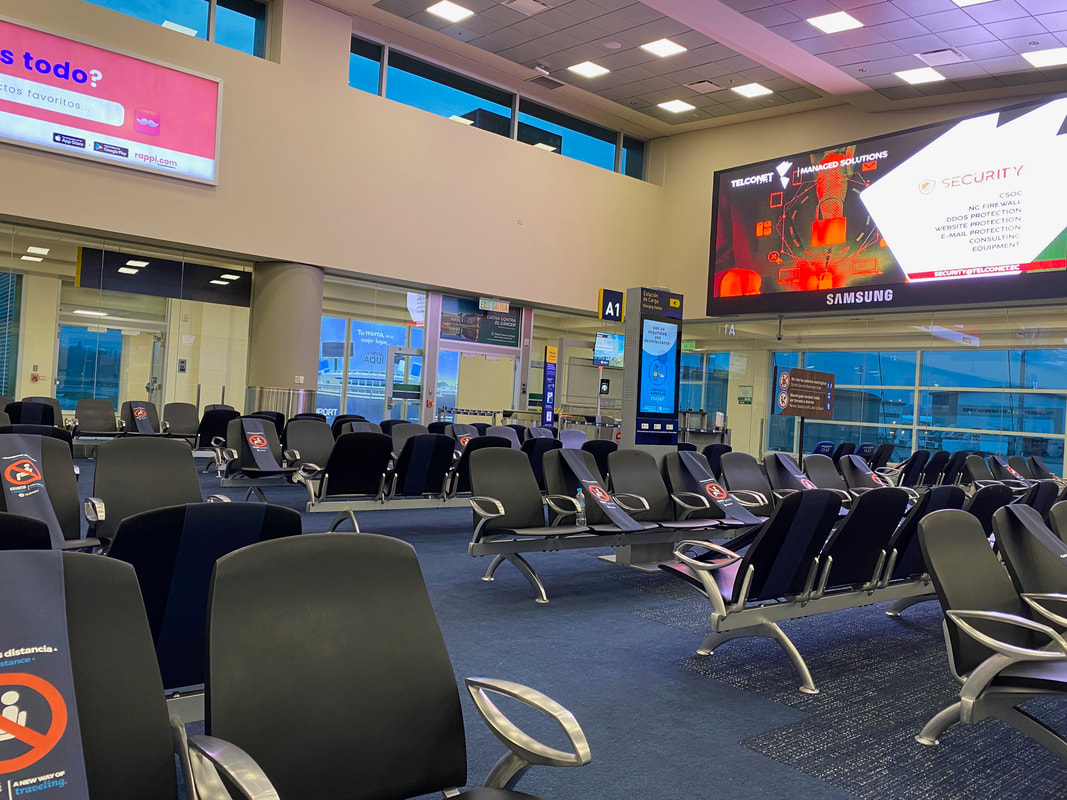


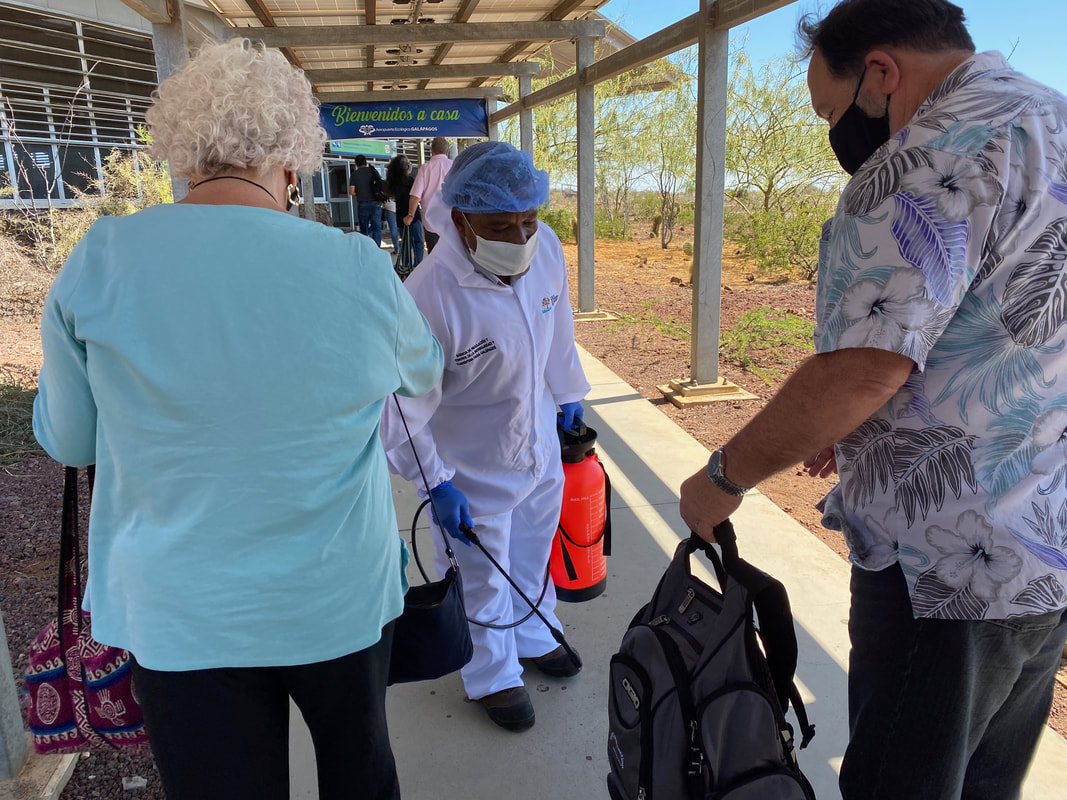







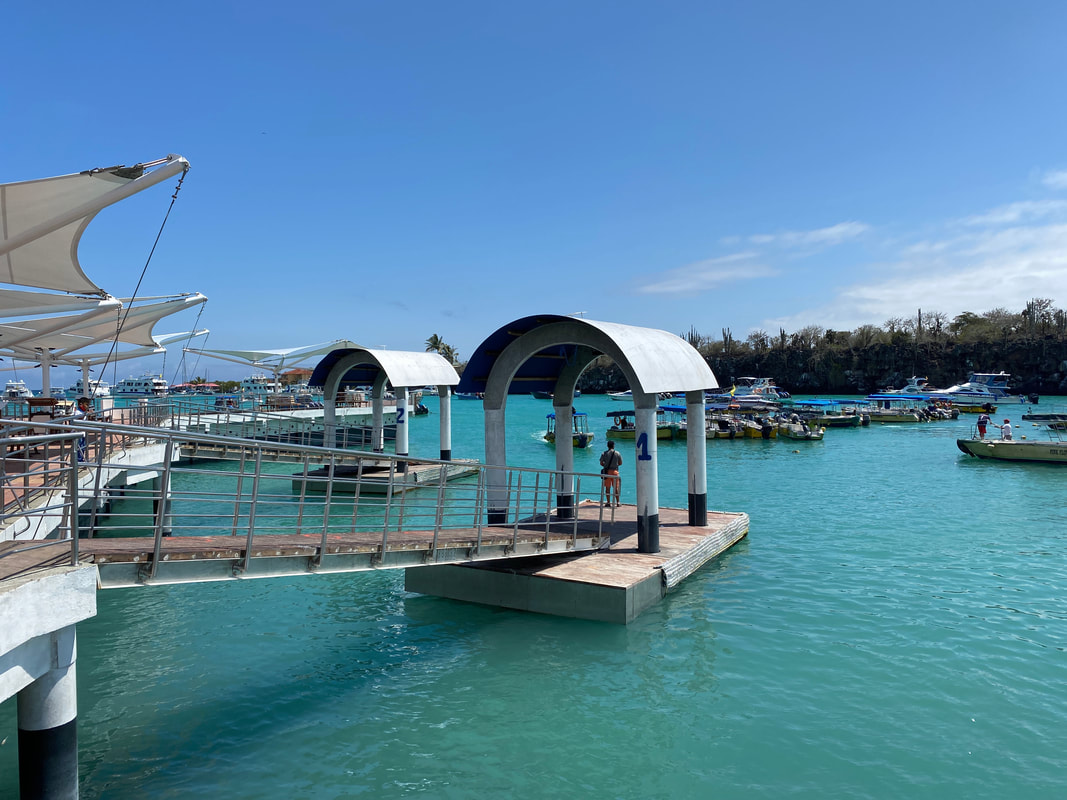








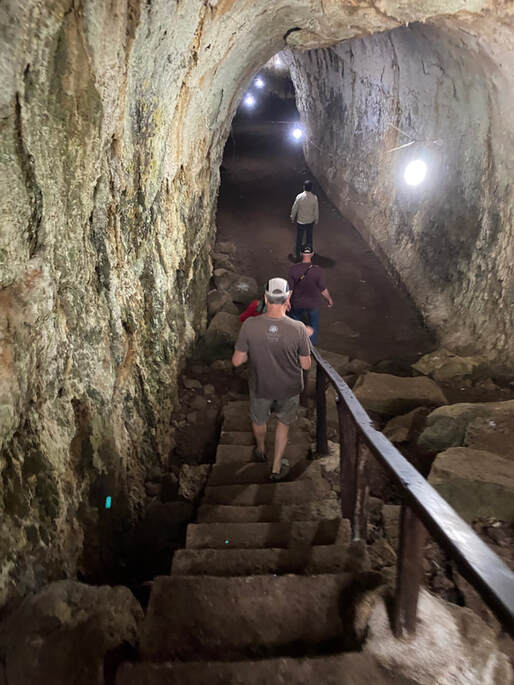




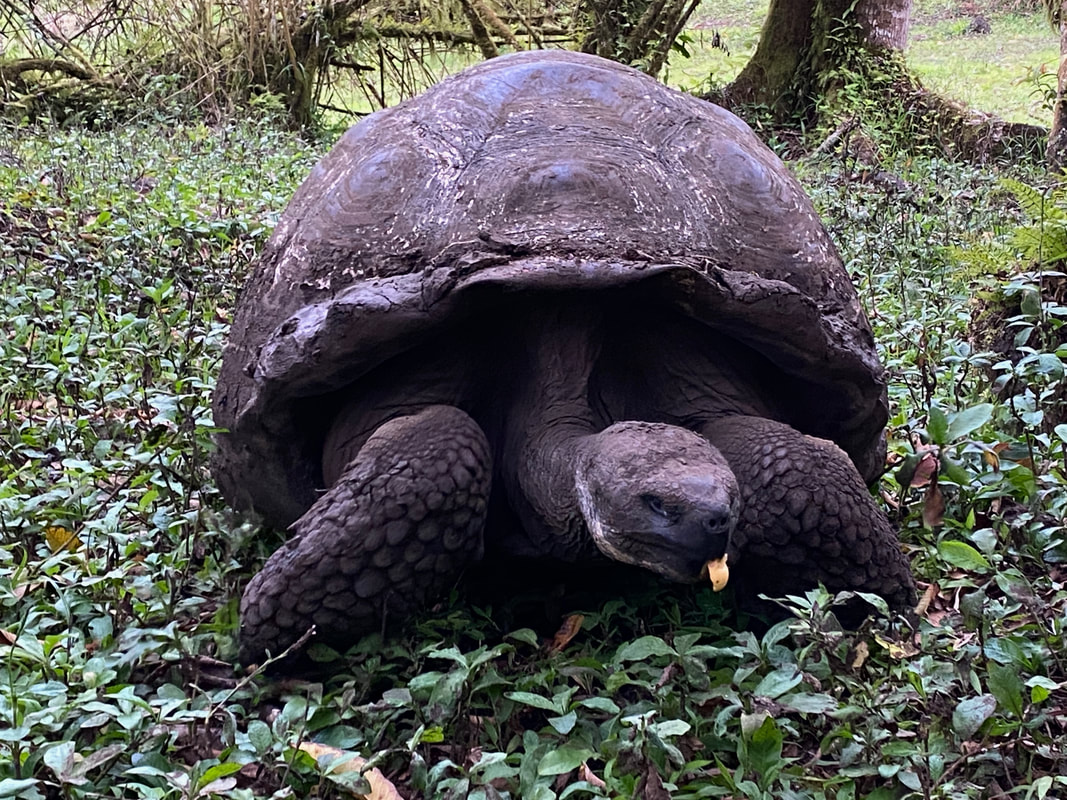



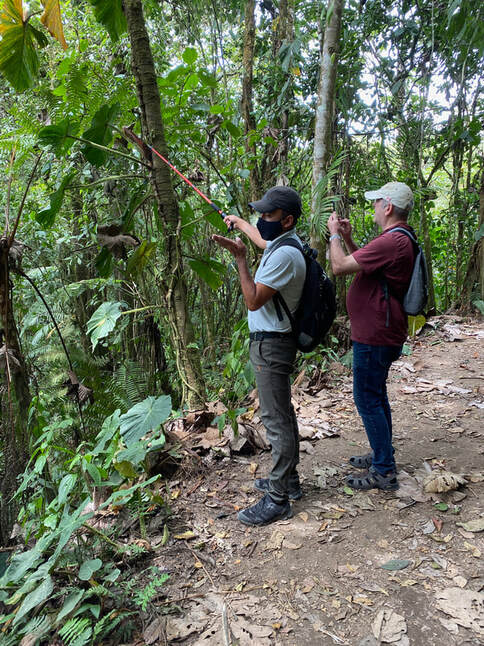


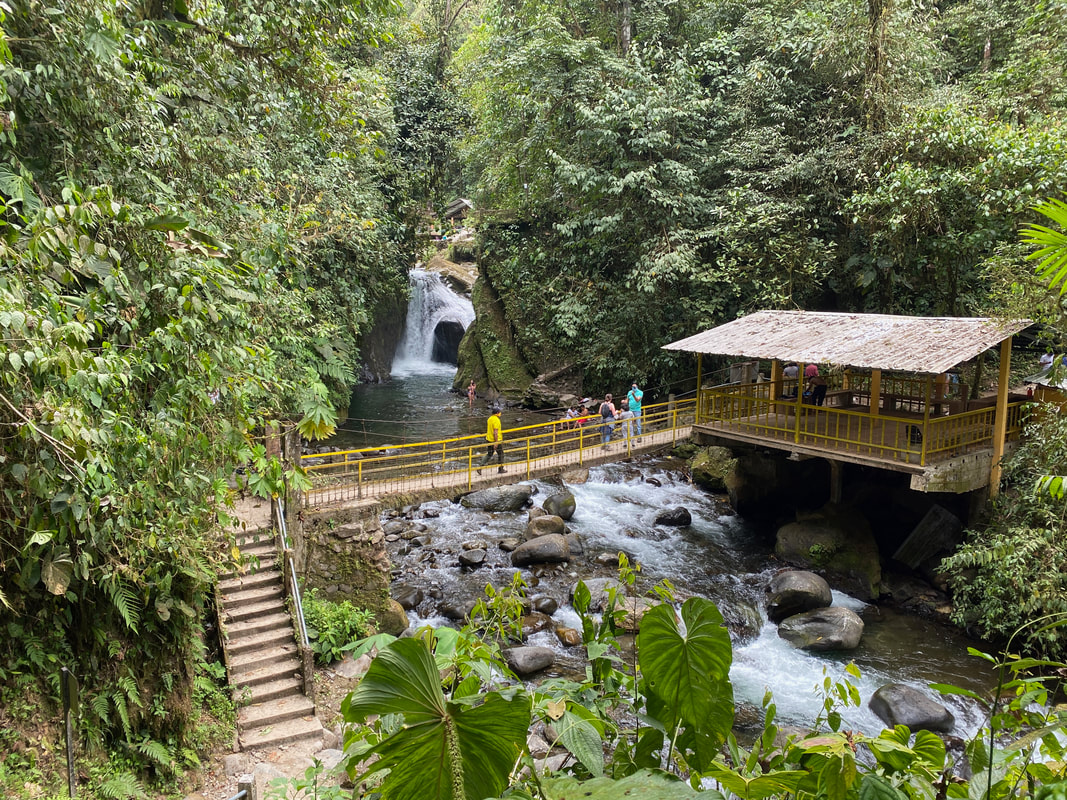








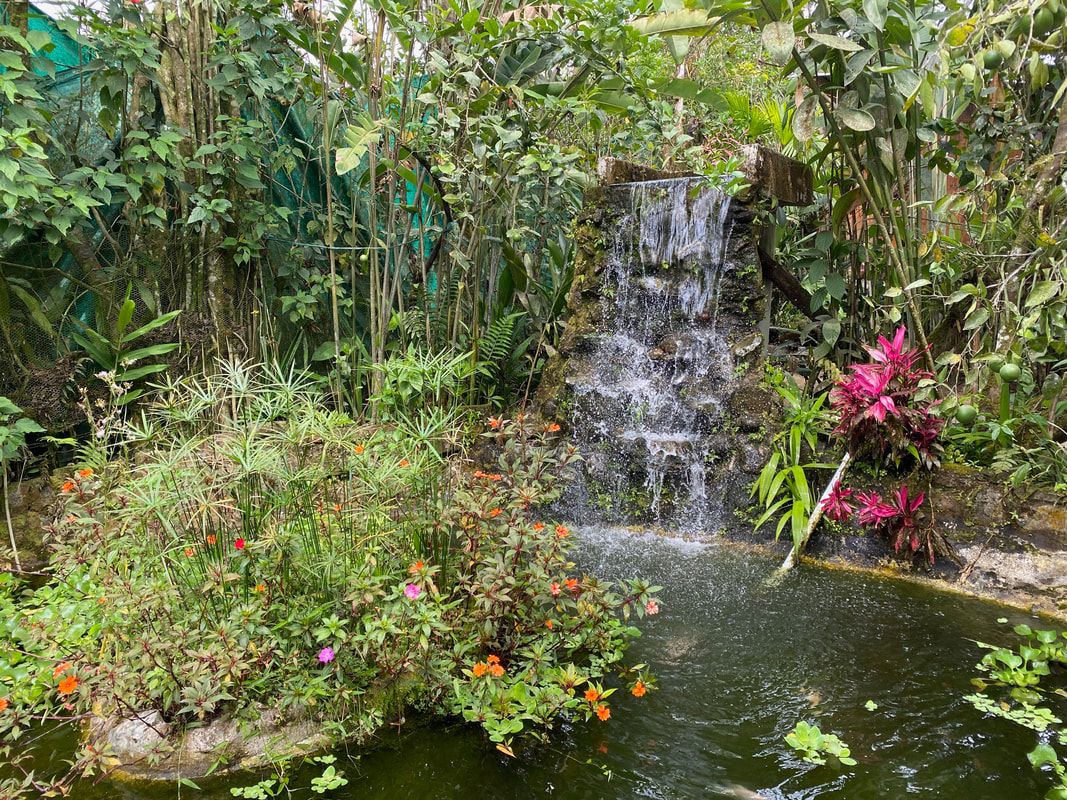














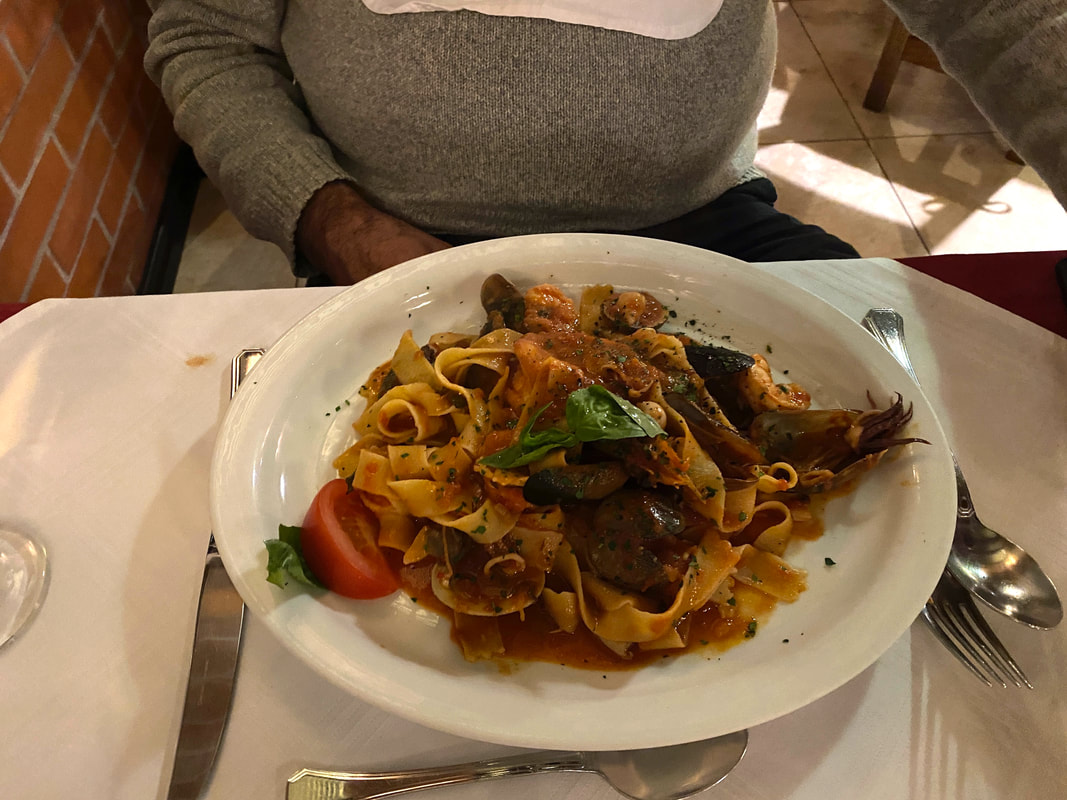







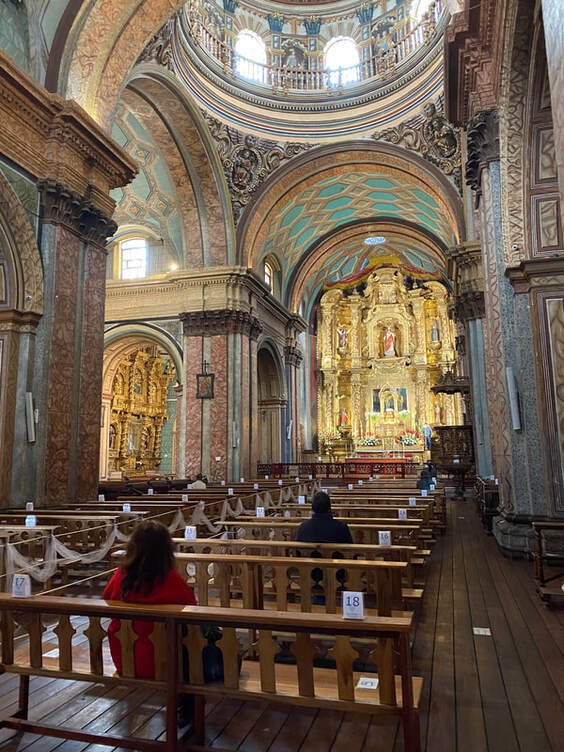





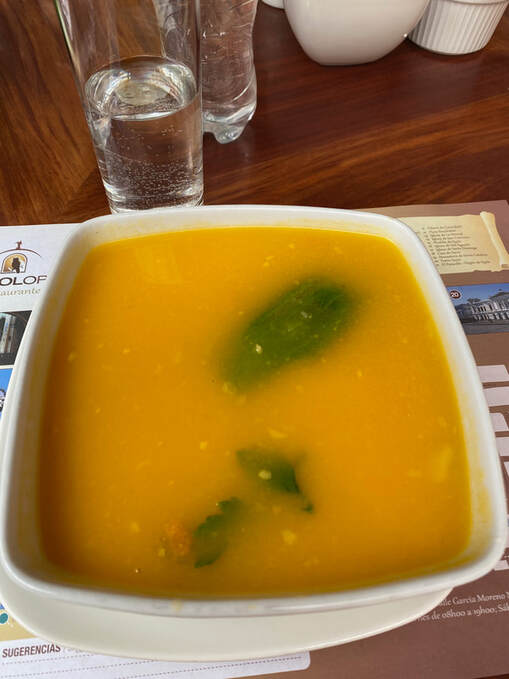
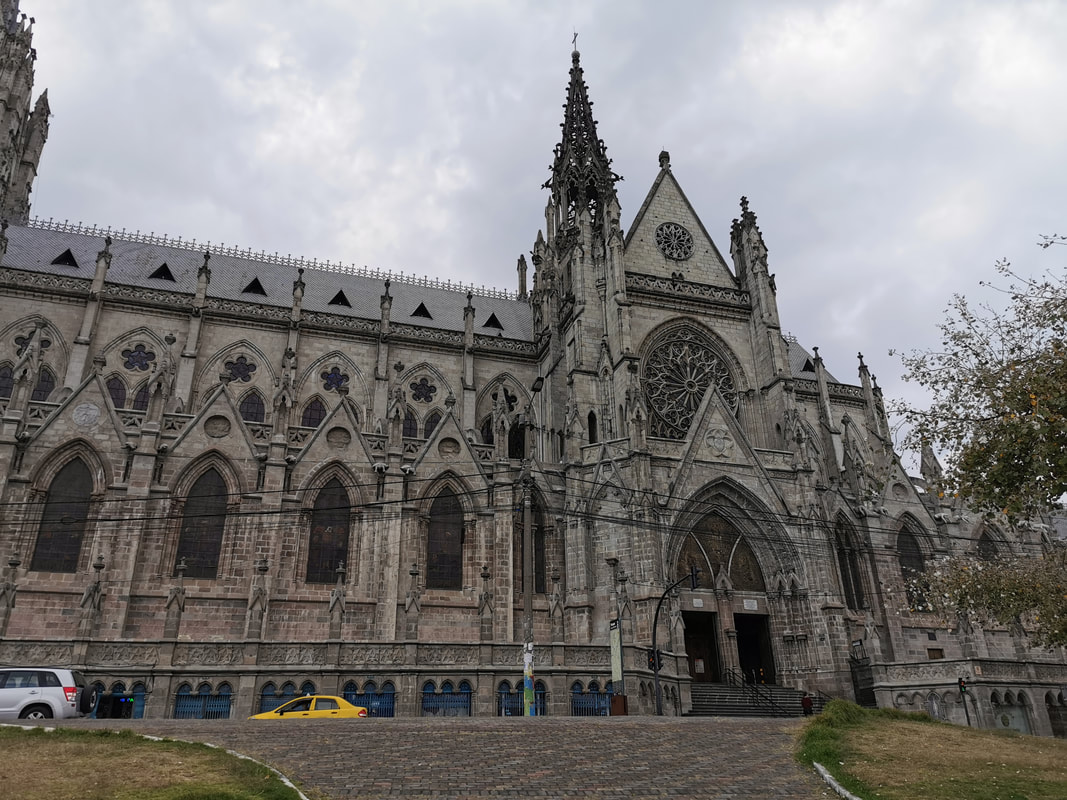


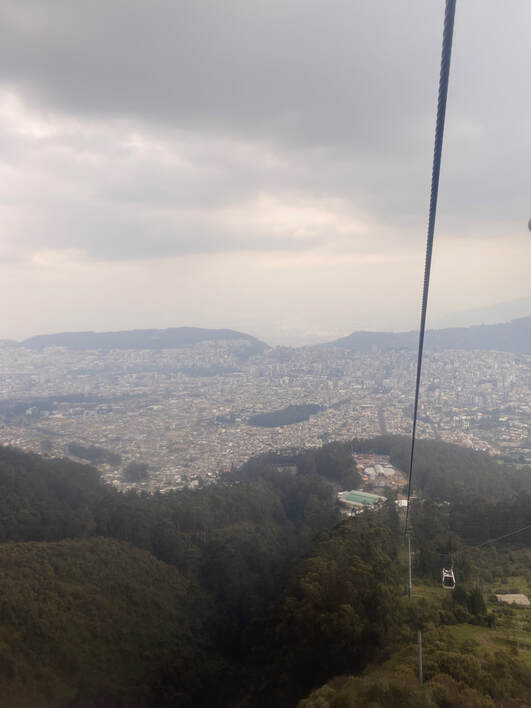
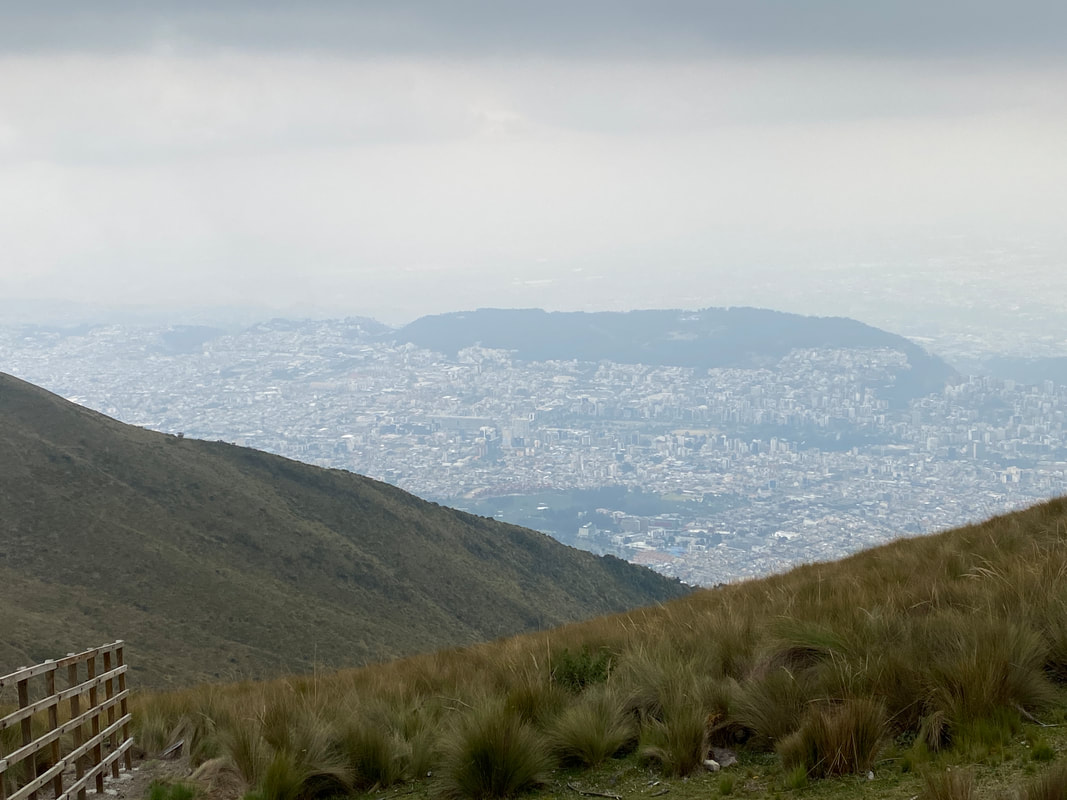









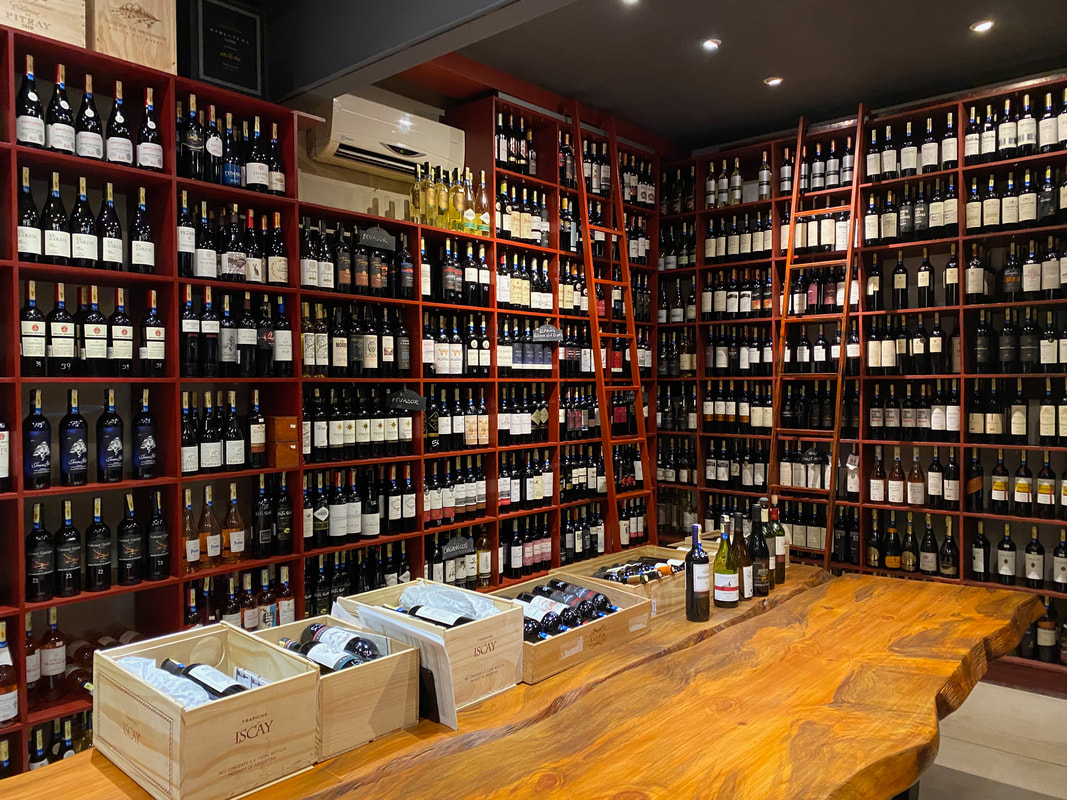






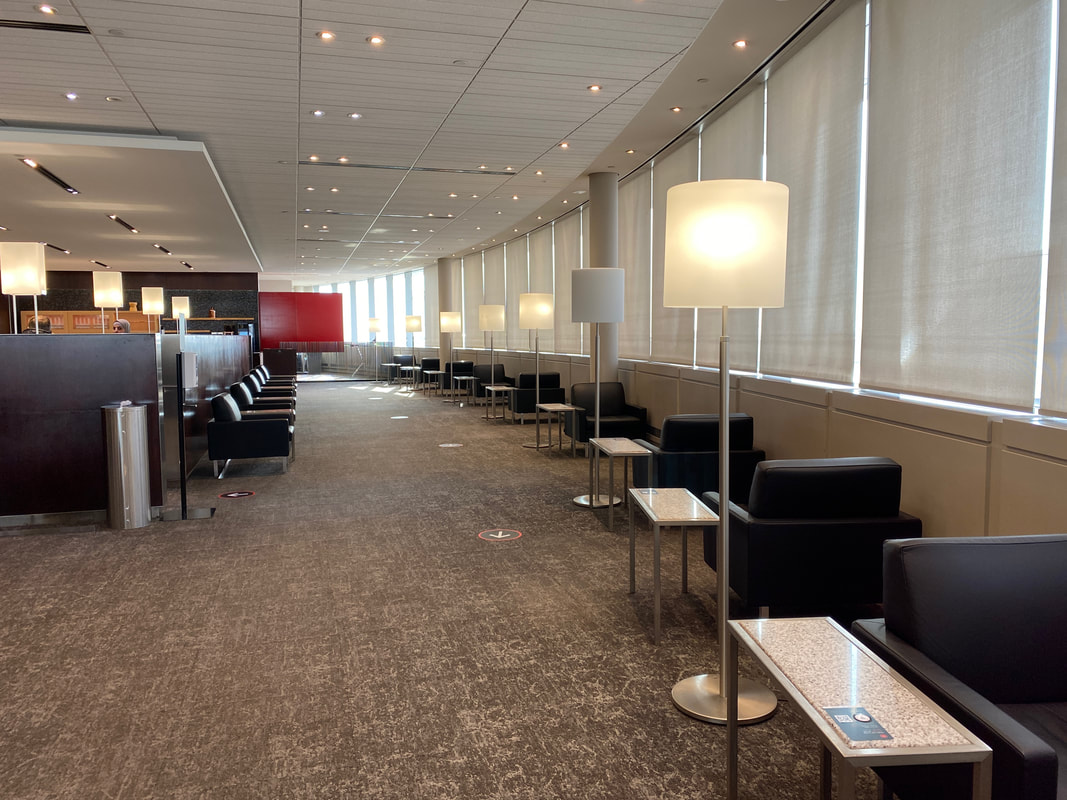


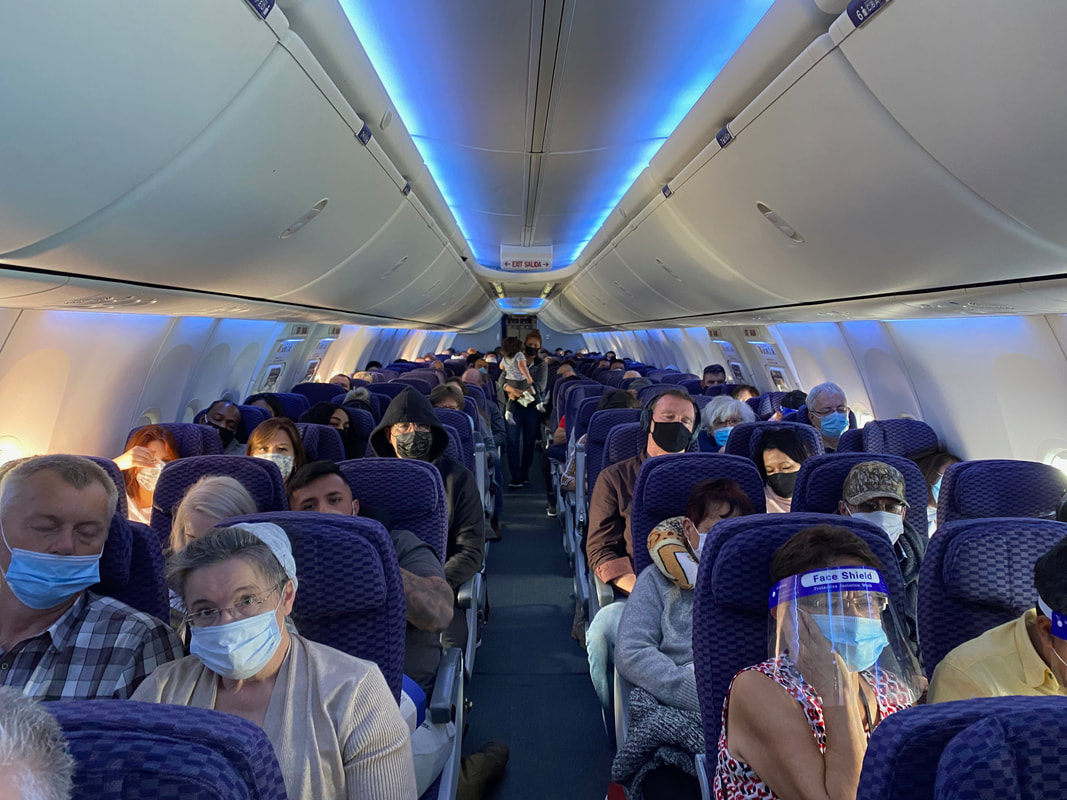


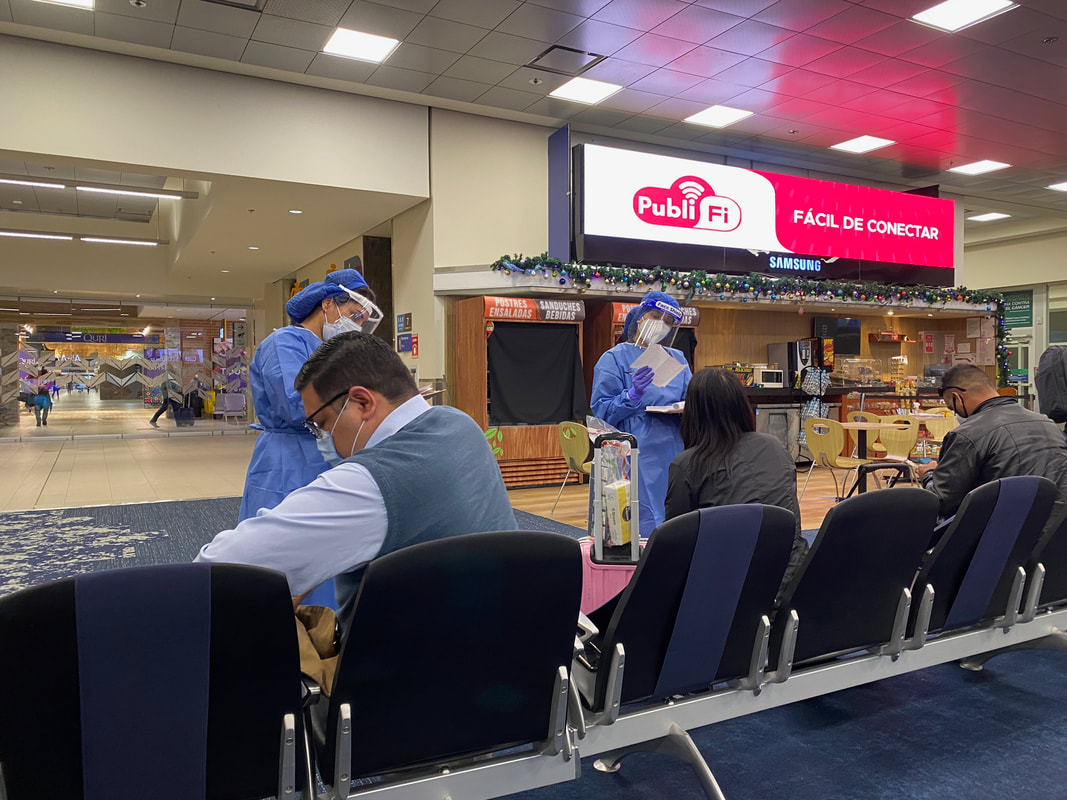









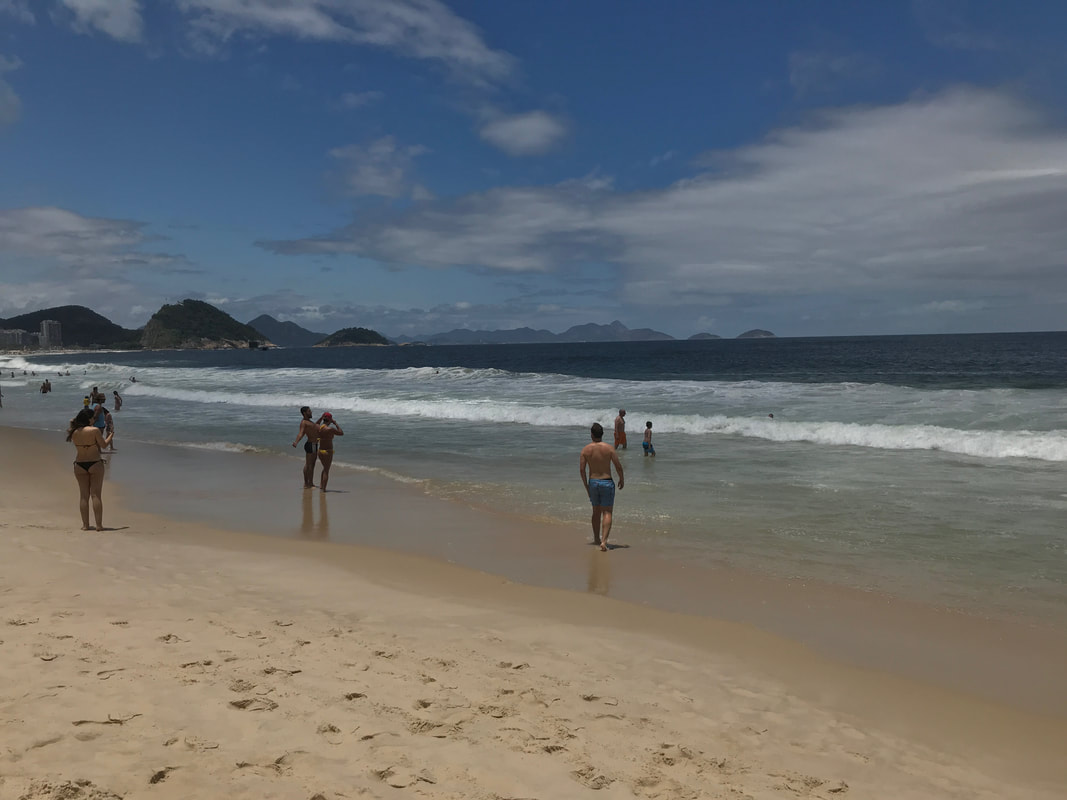










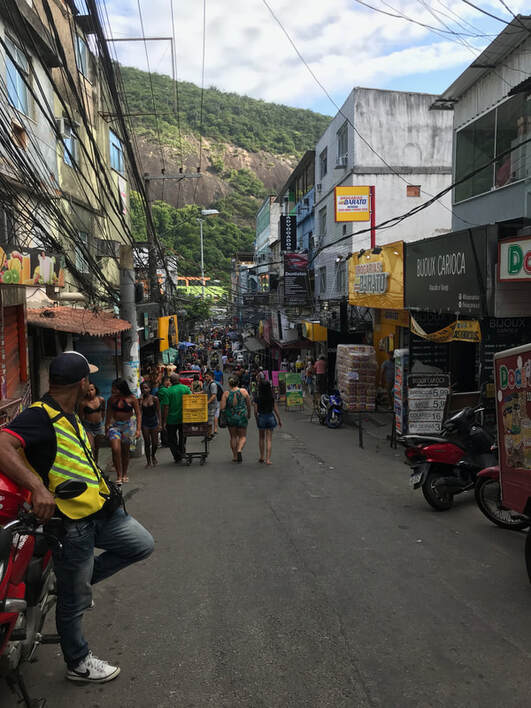




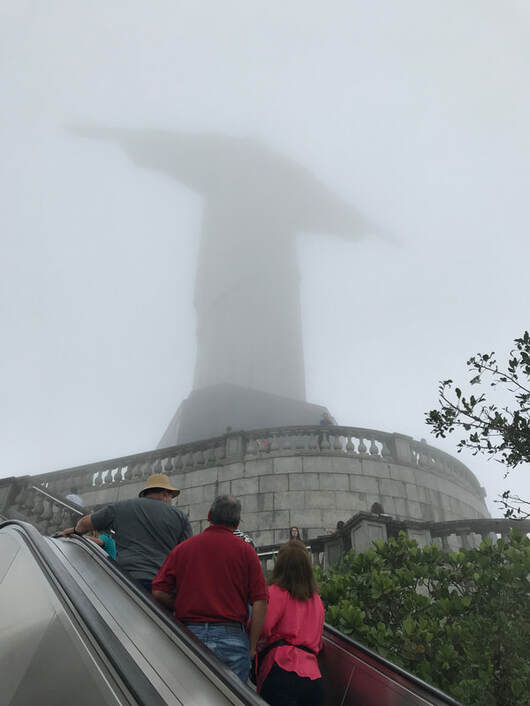
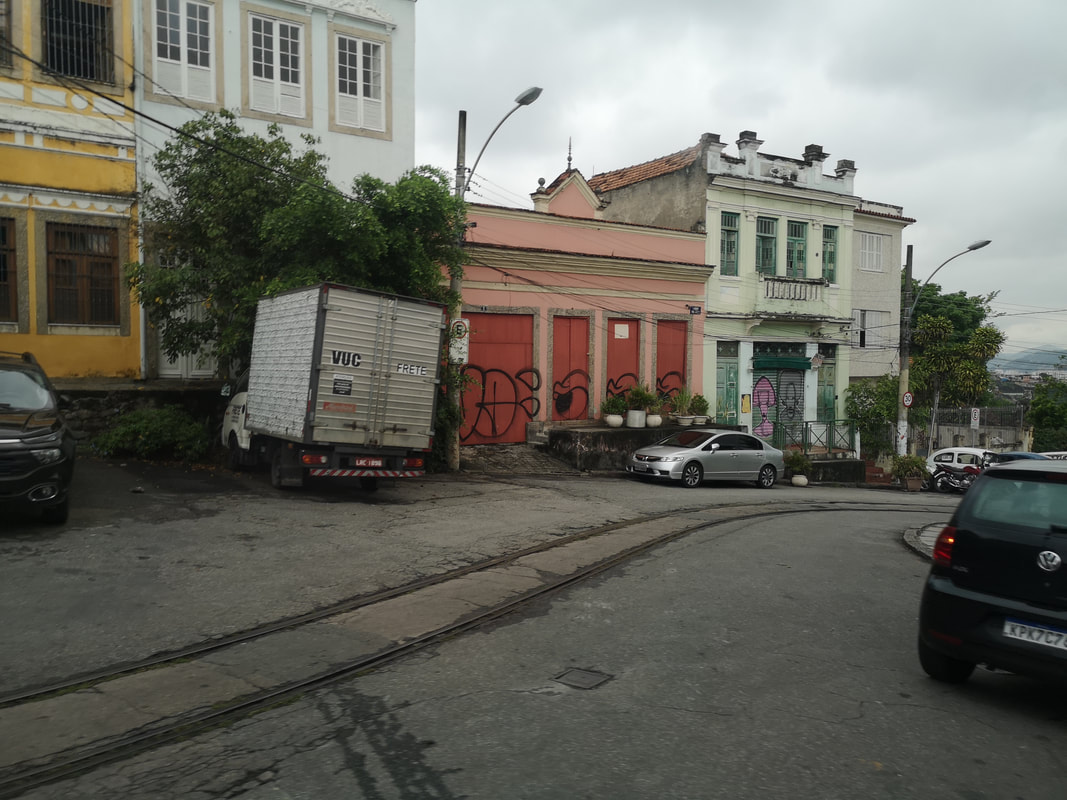





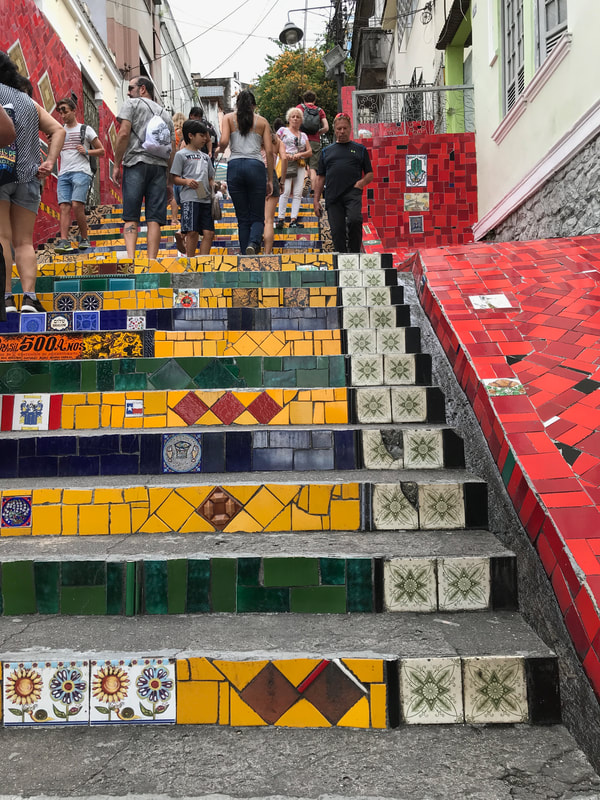

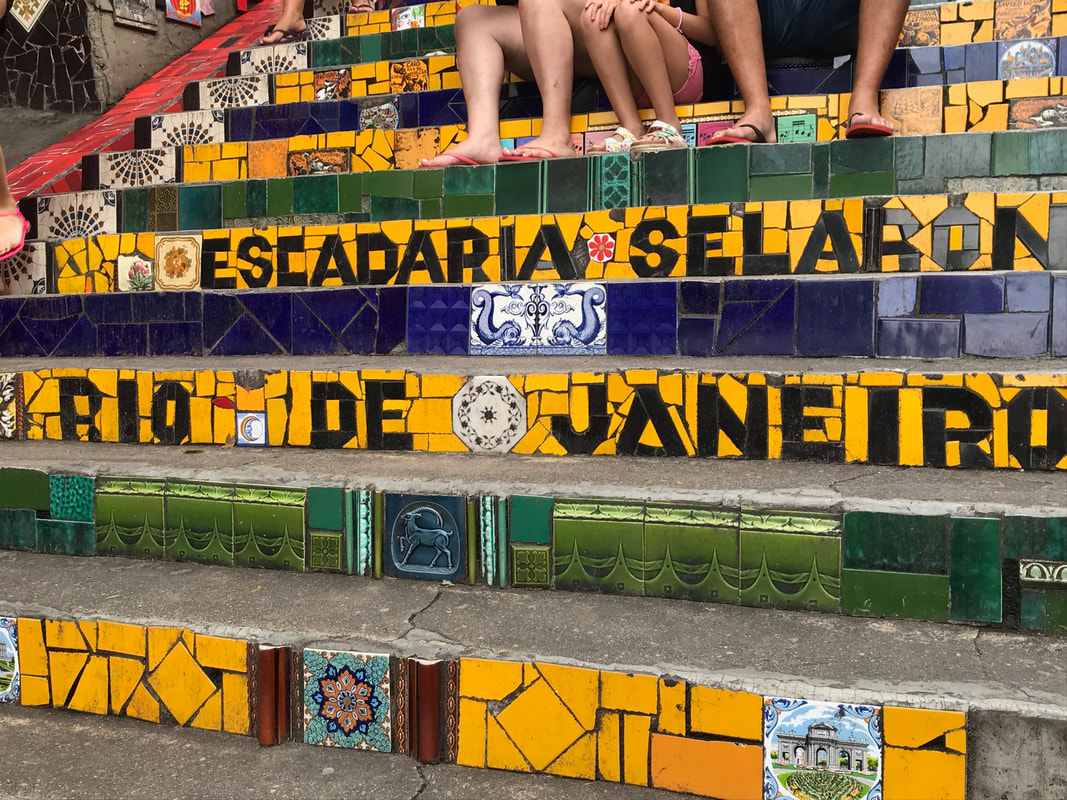
























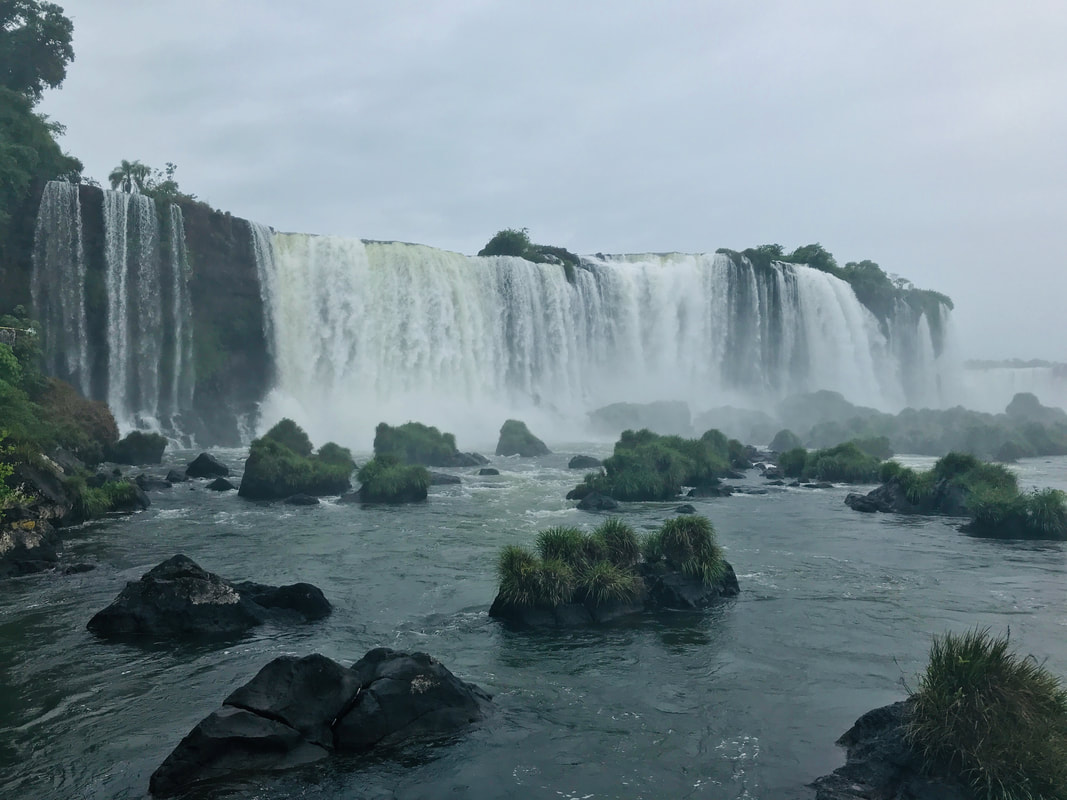


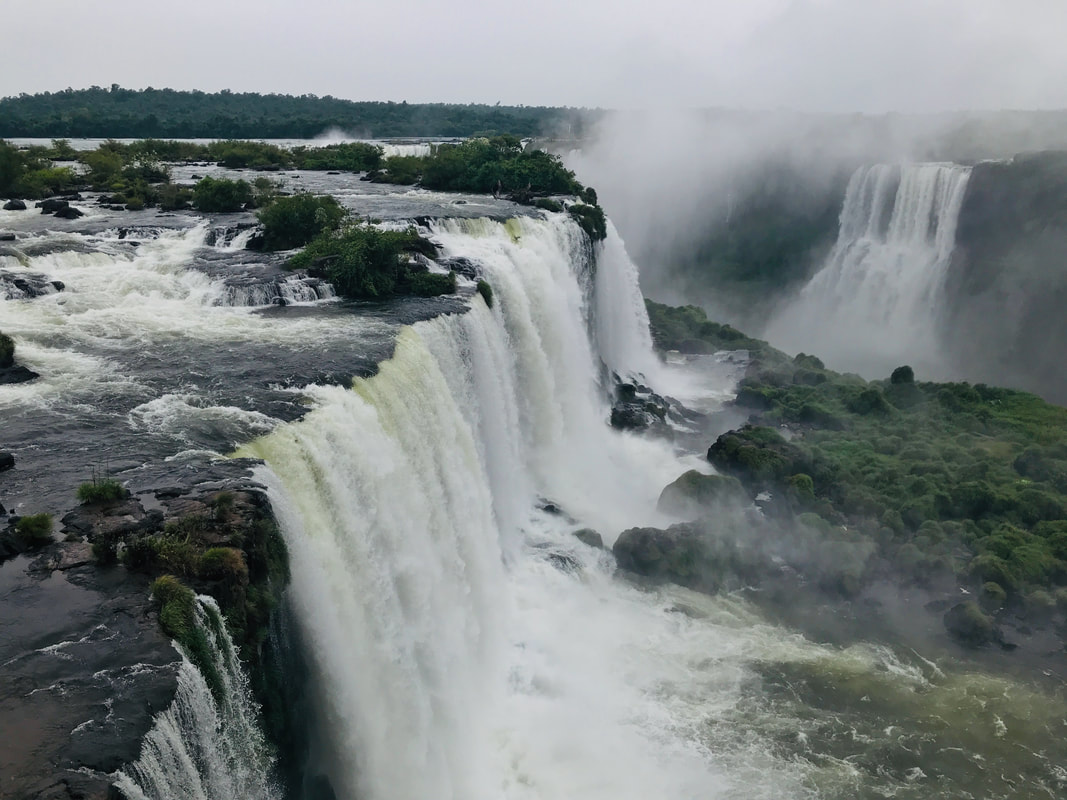



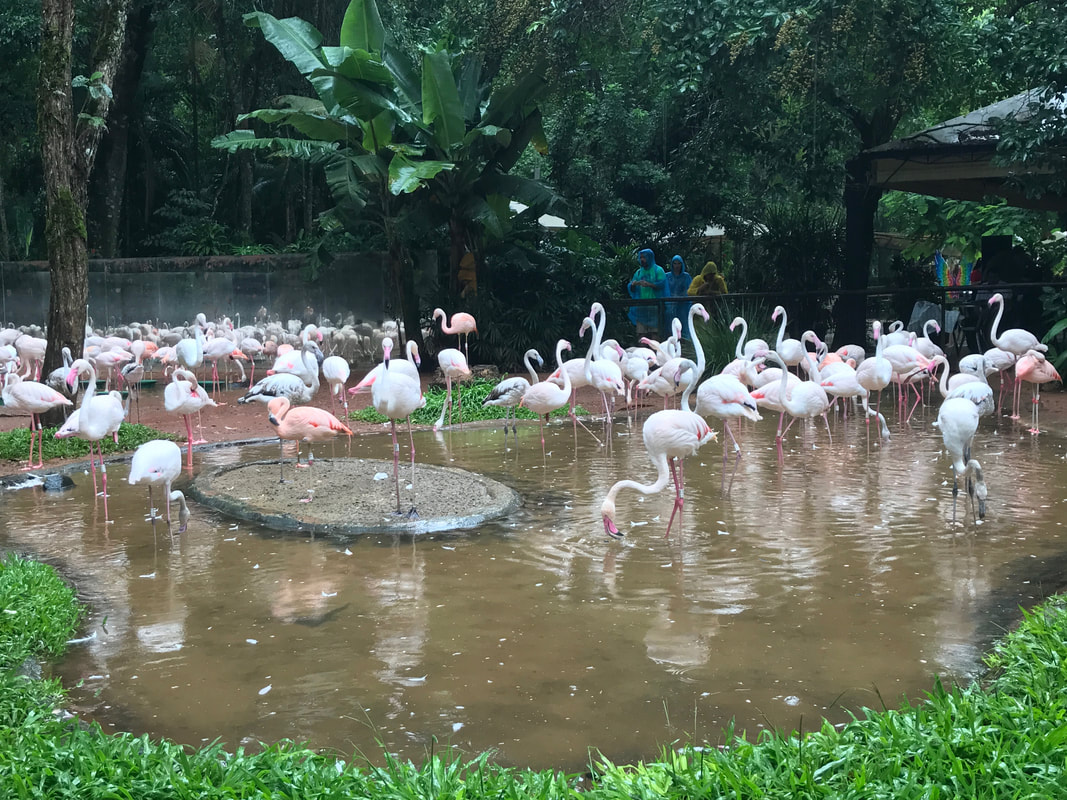





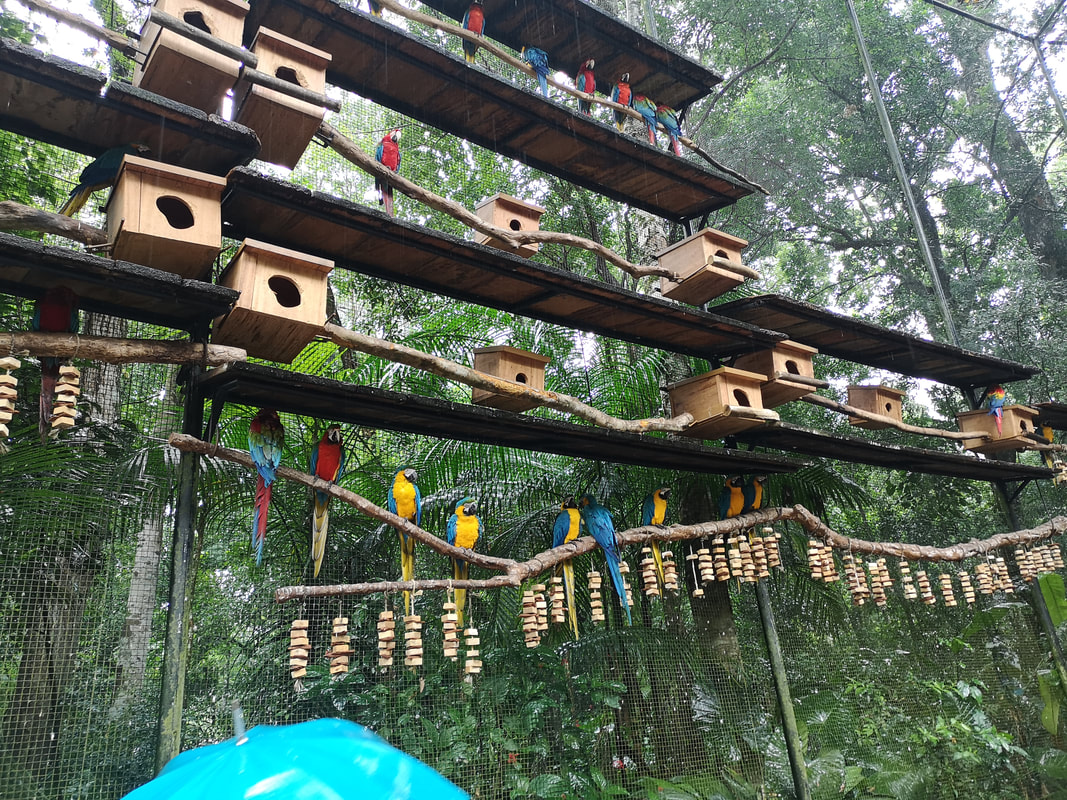
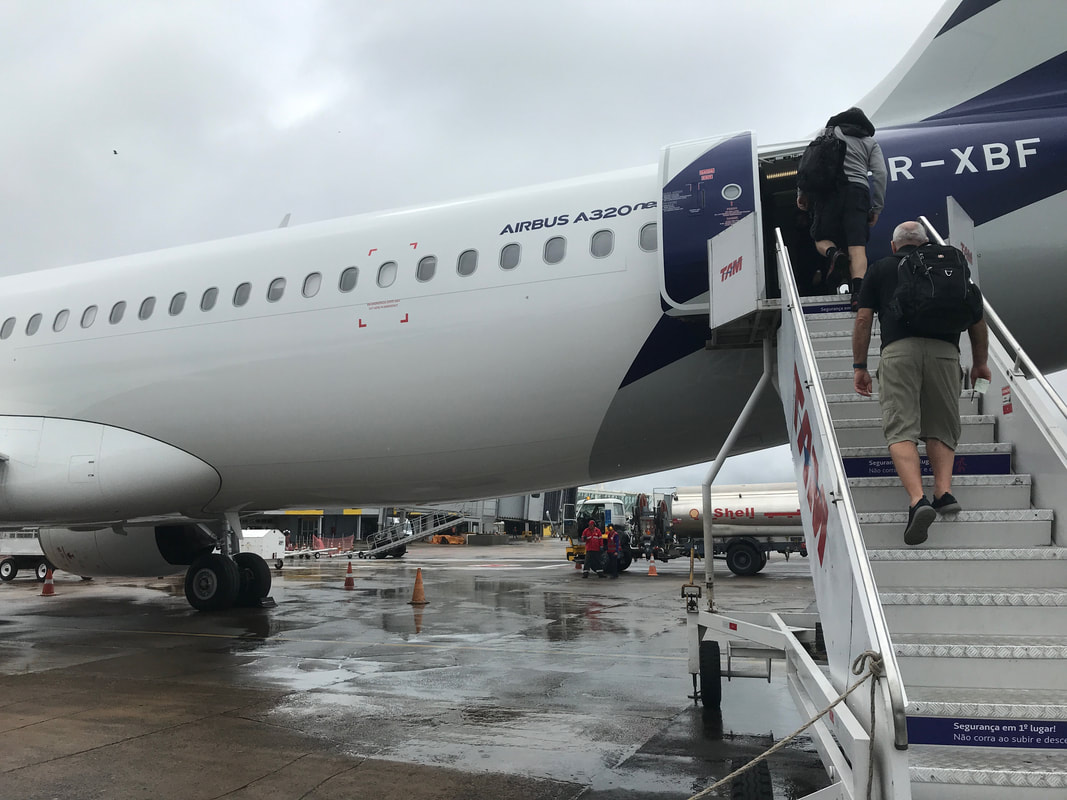

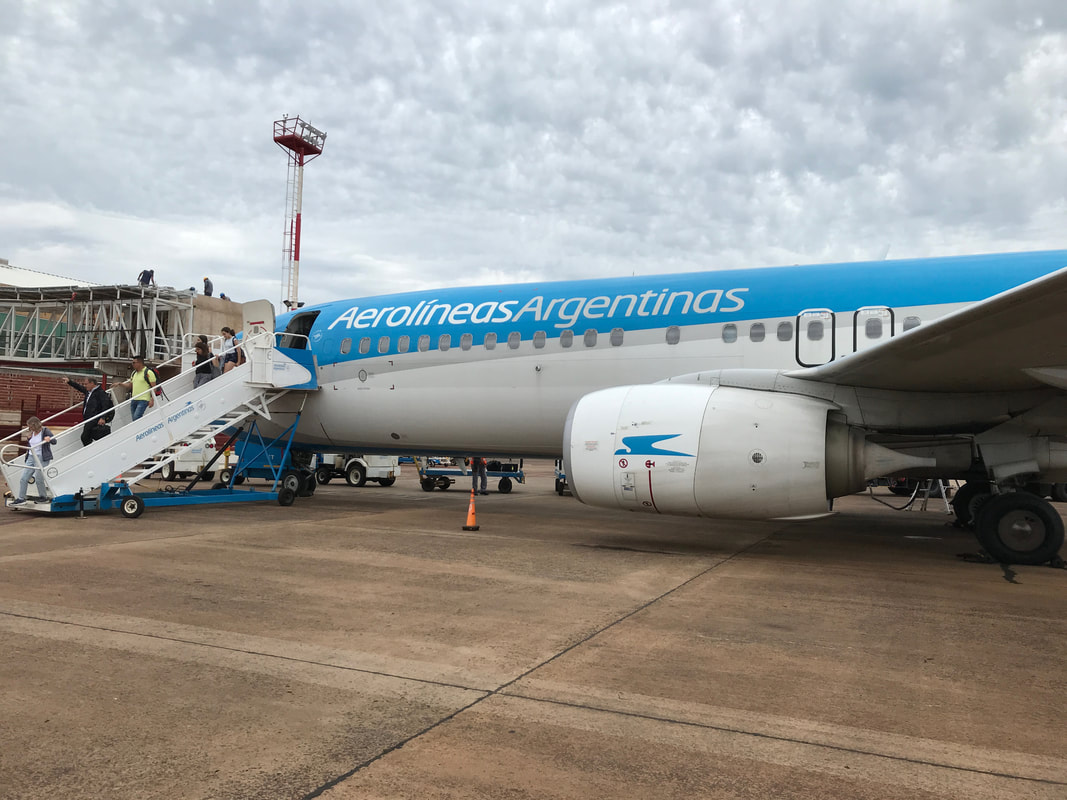

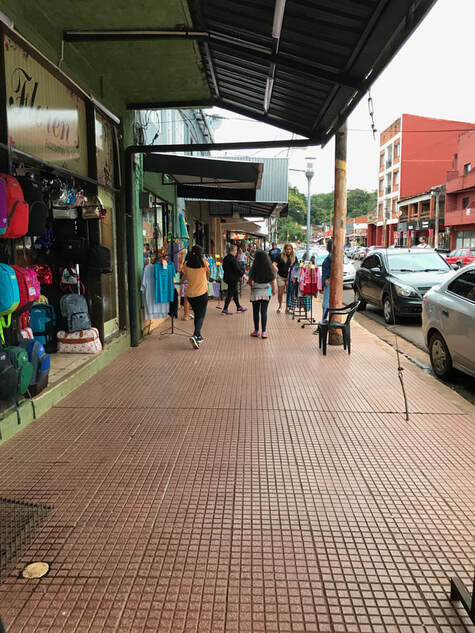




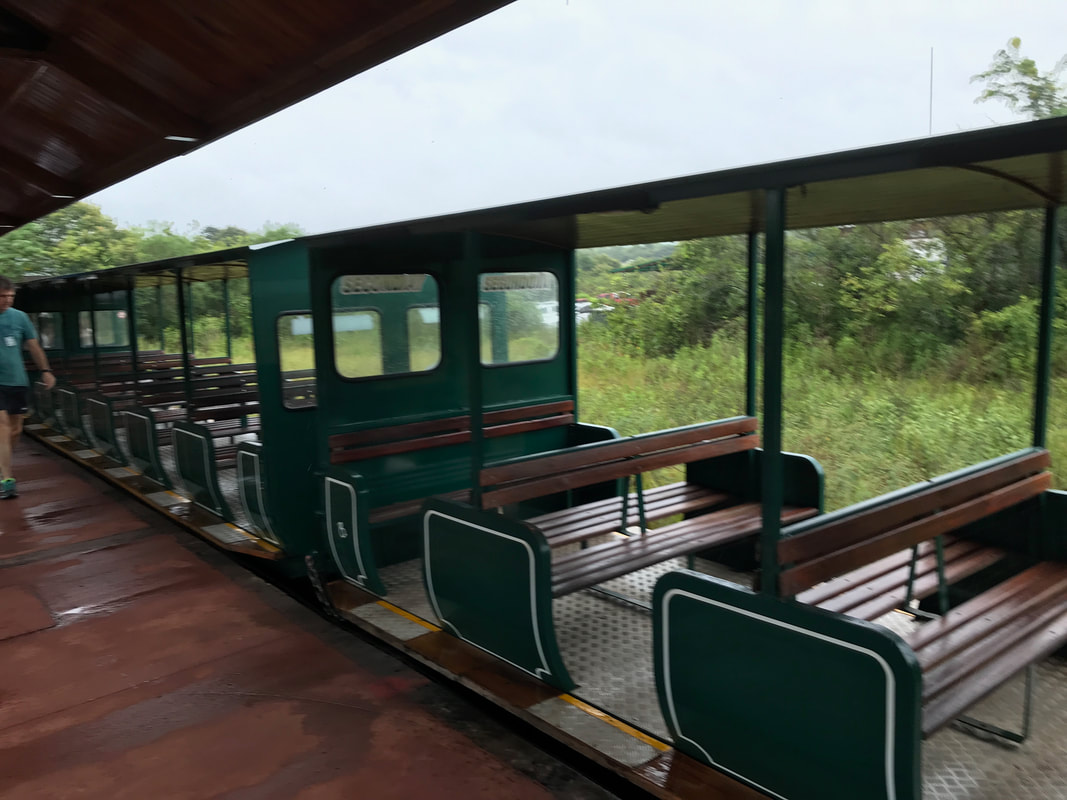





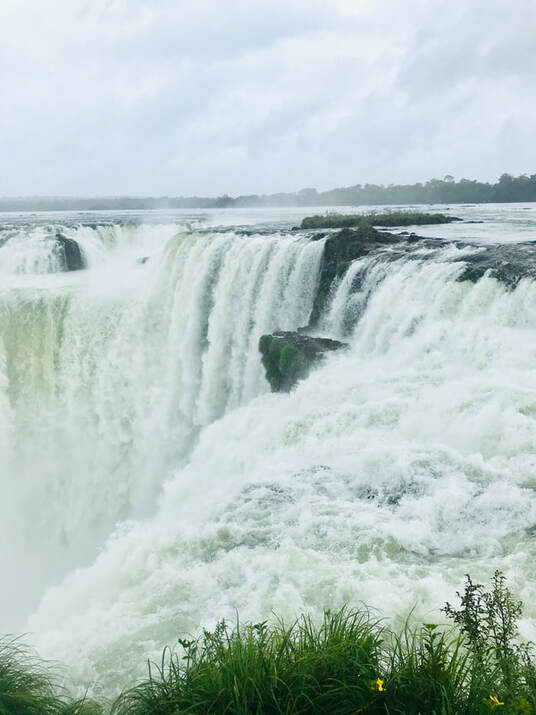



















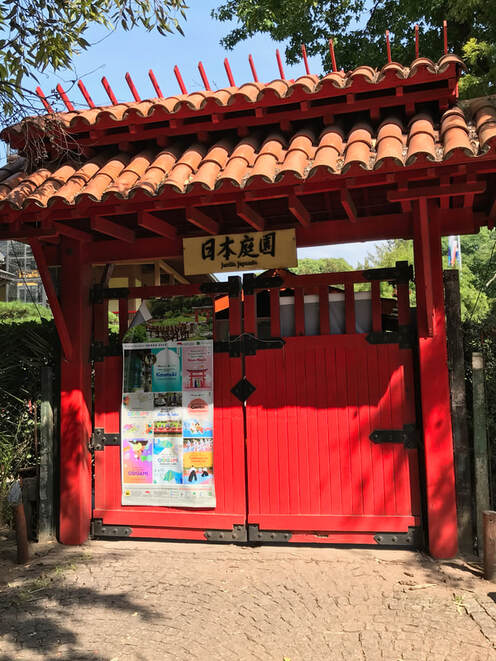






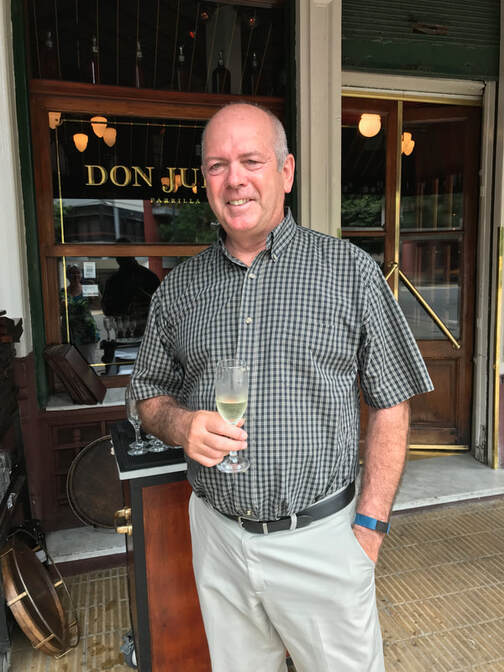










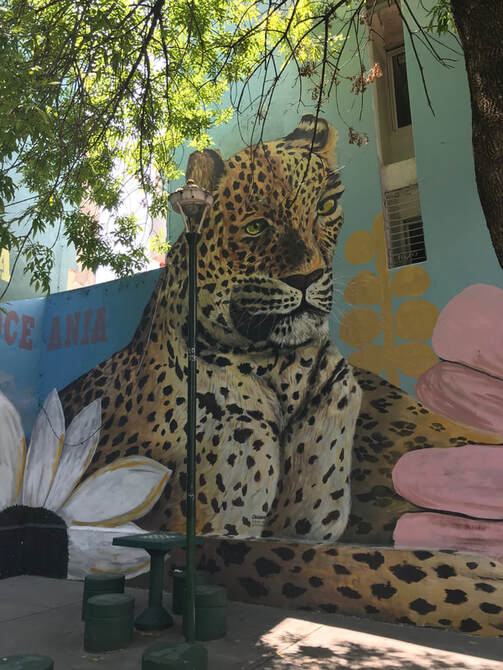


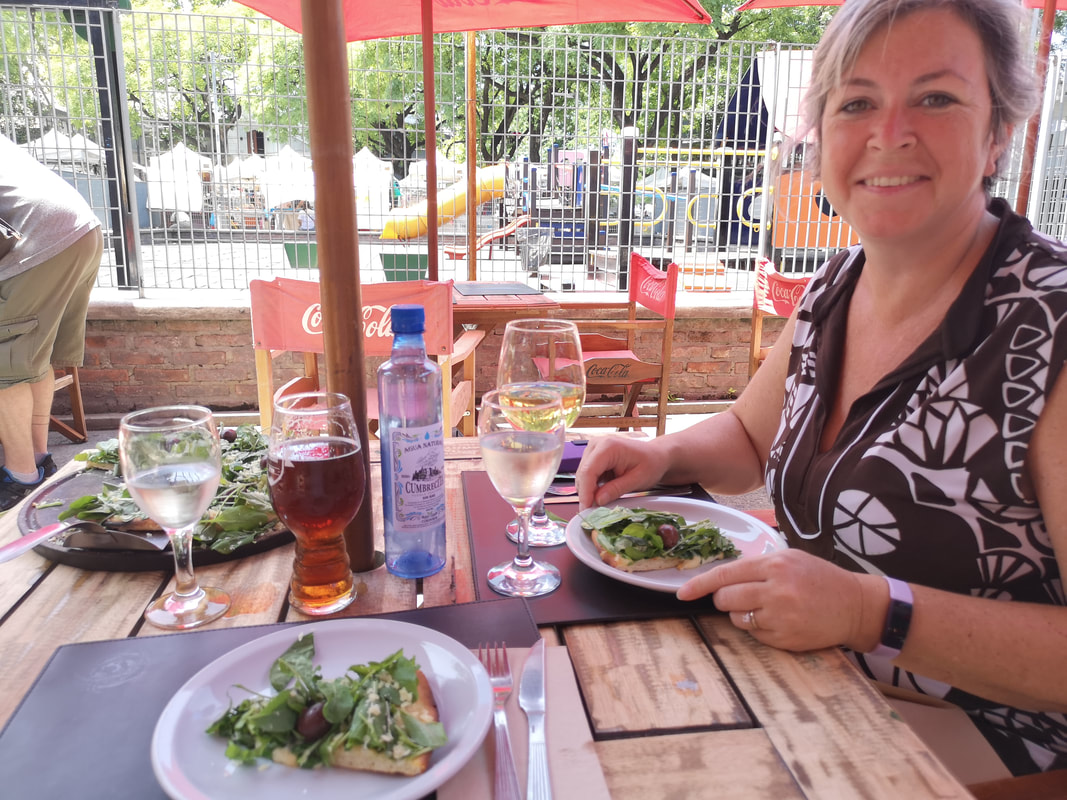












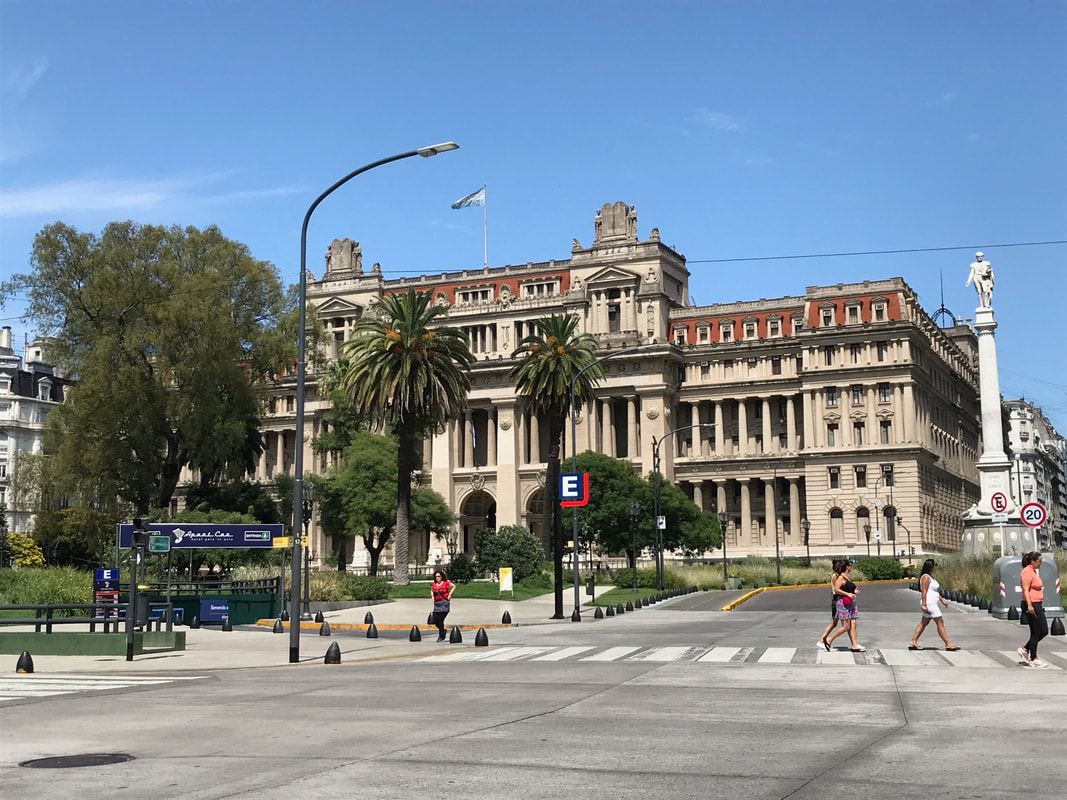
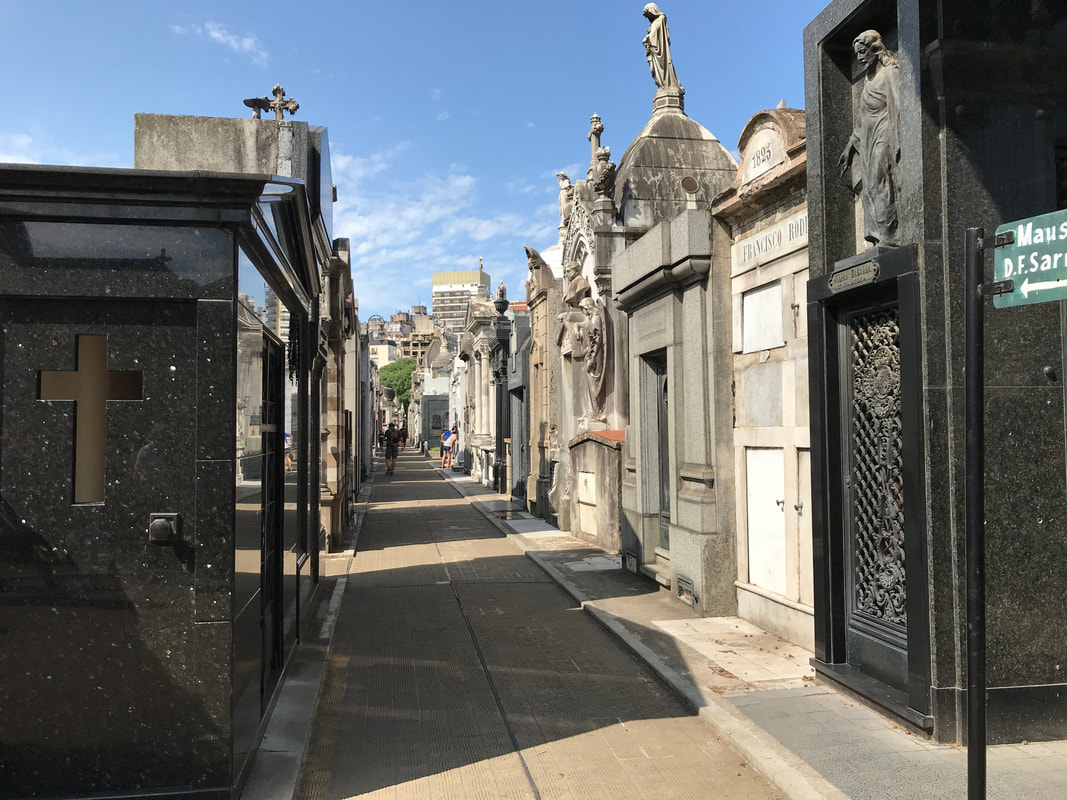
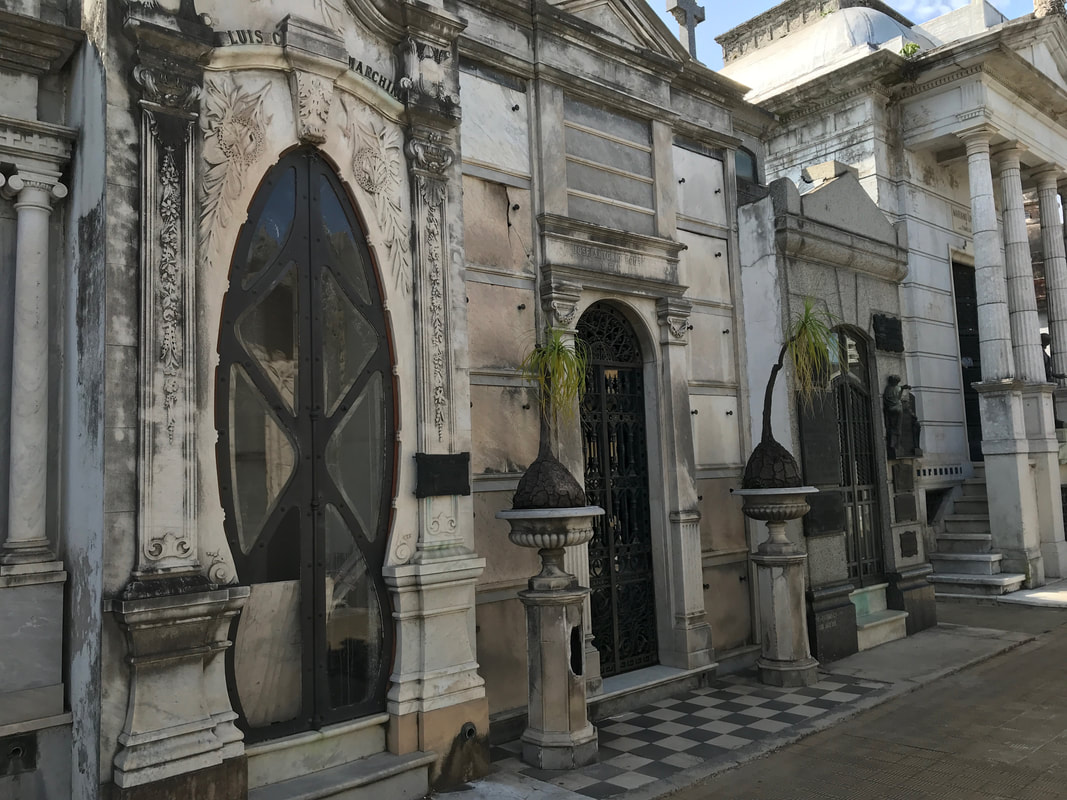





















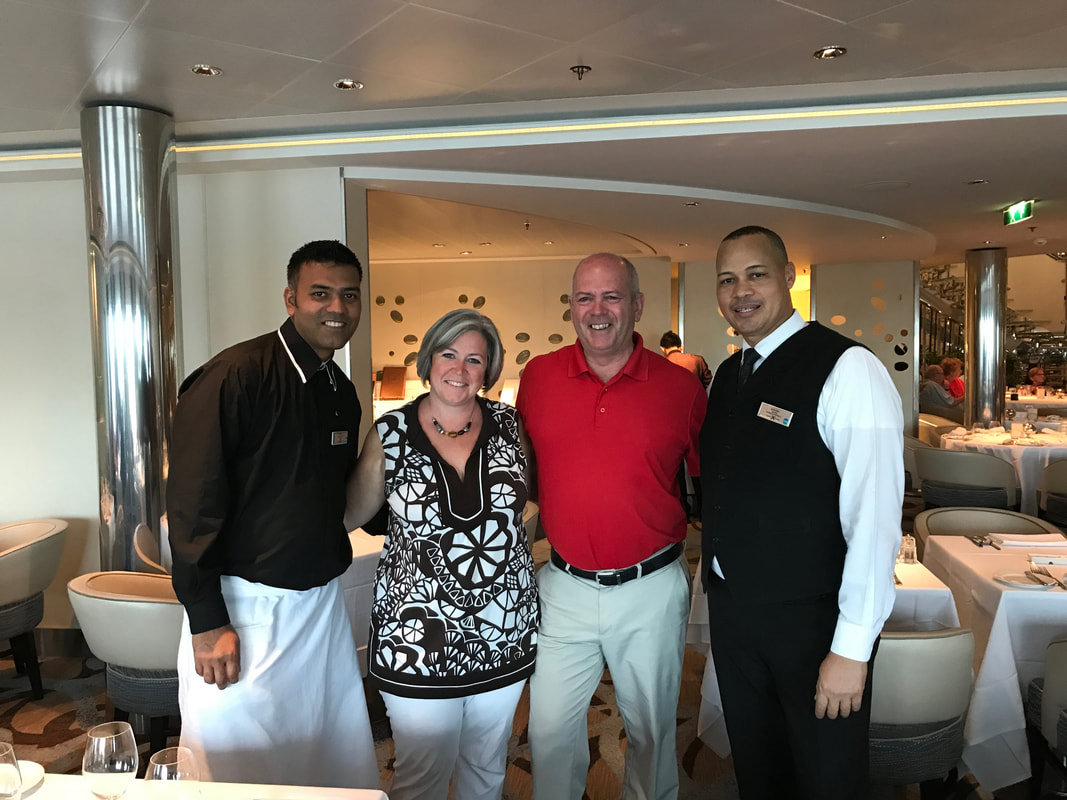




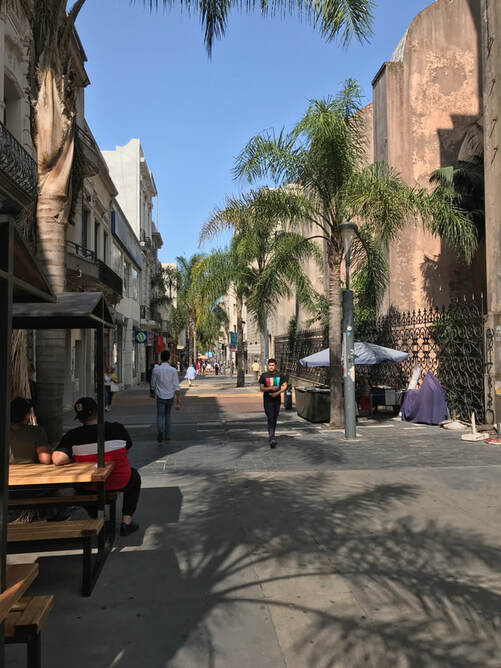








 RSS Feed
RSS Feed